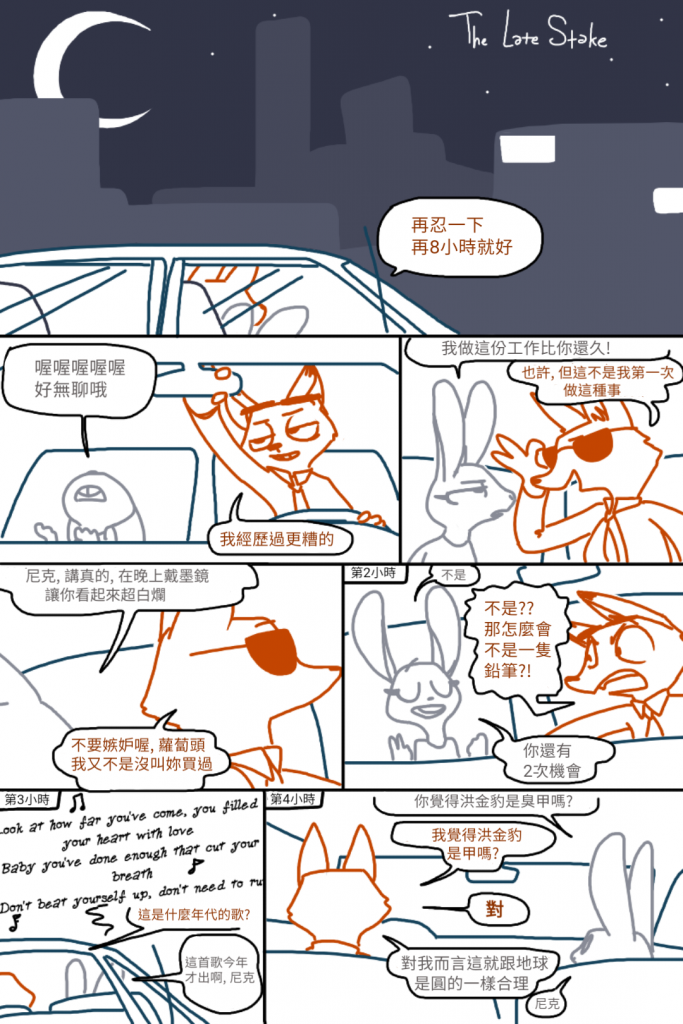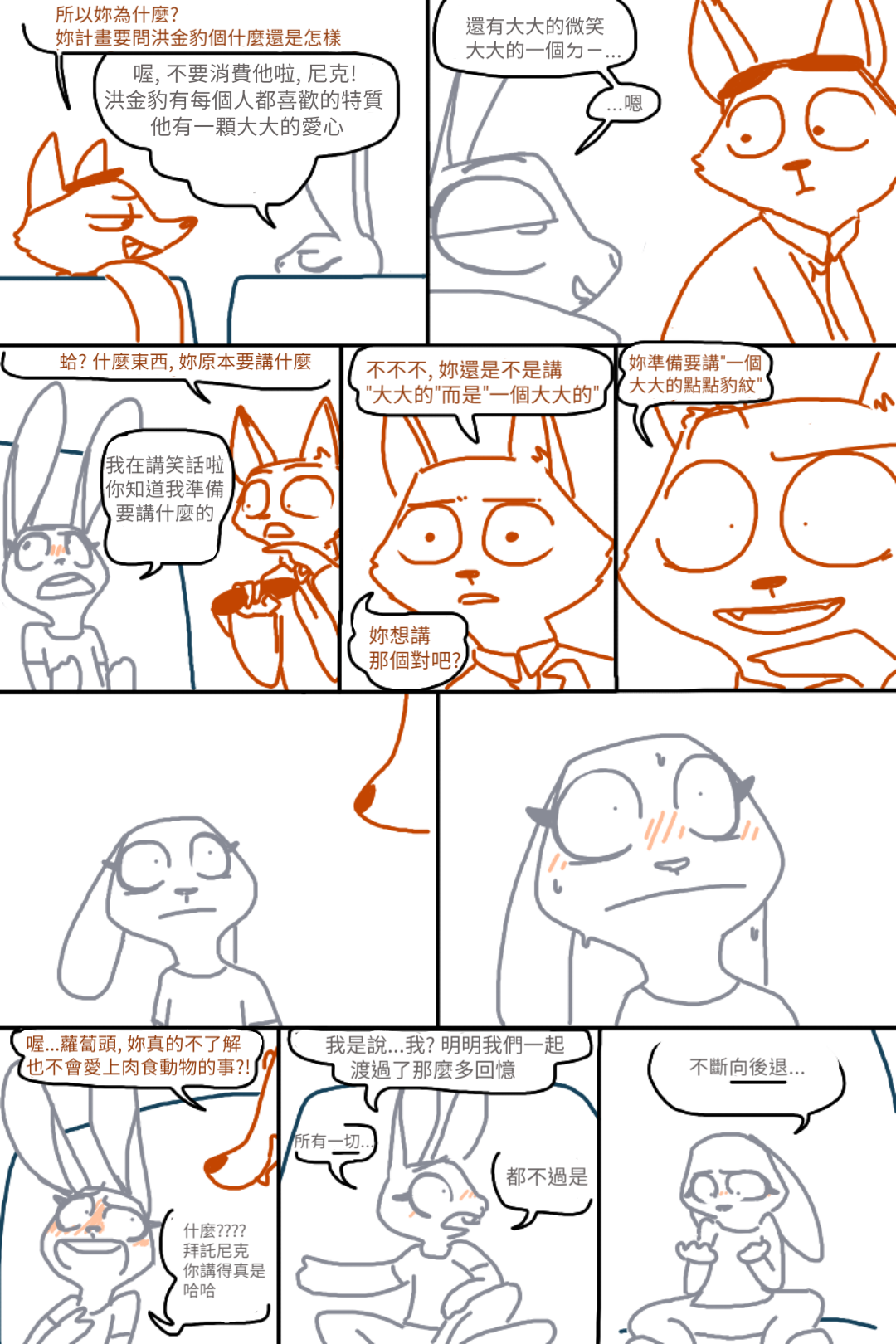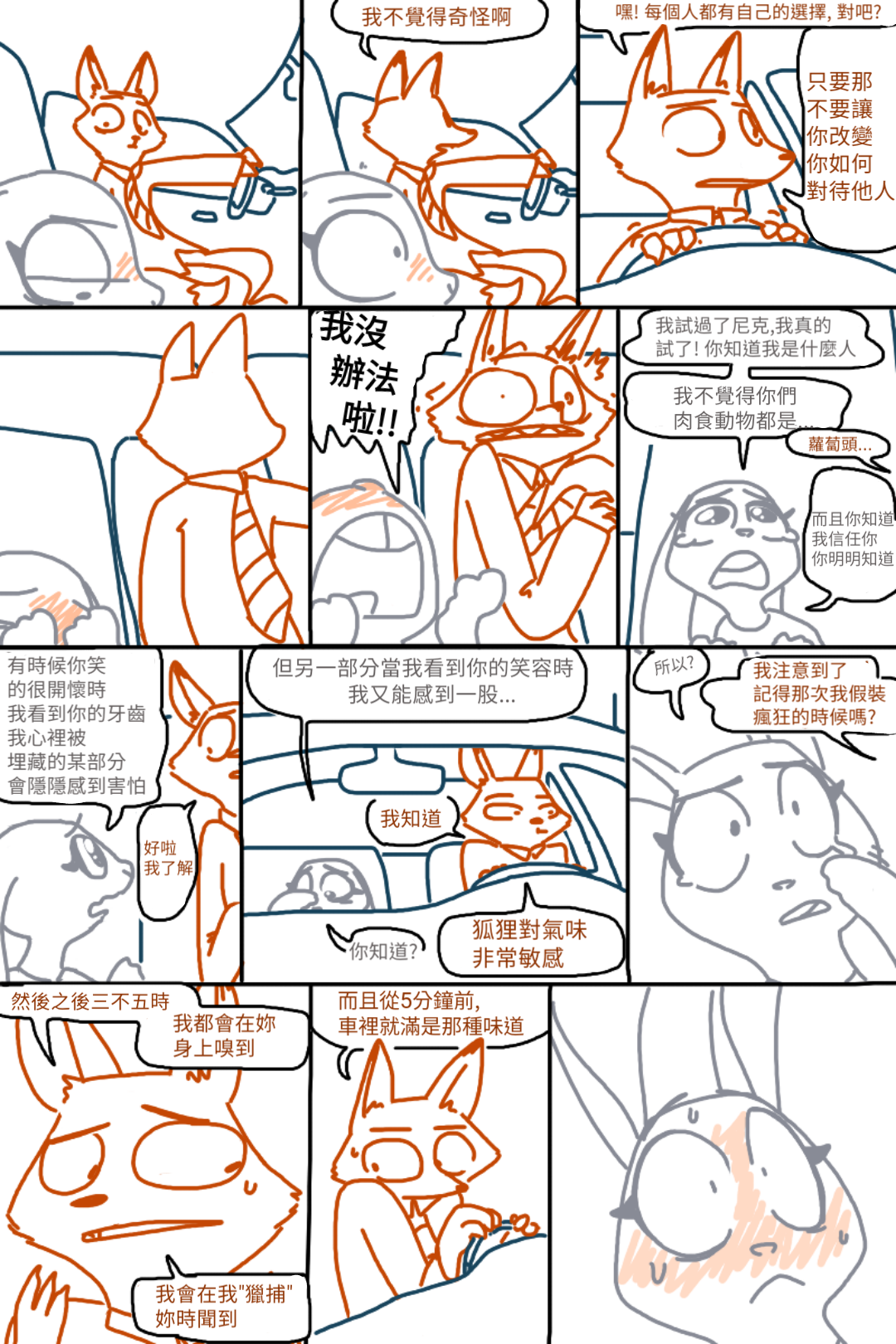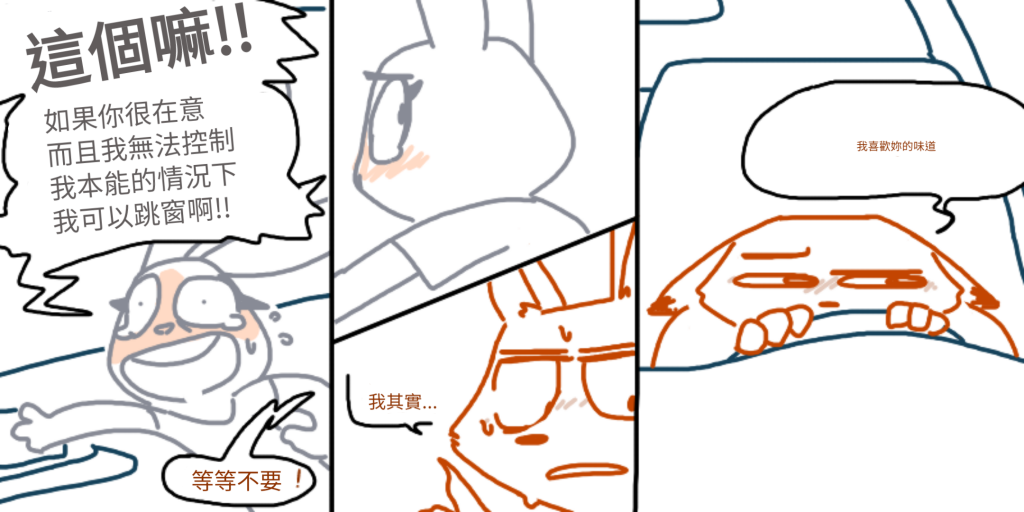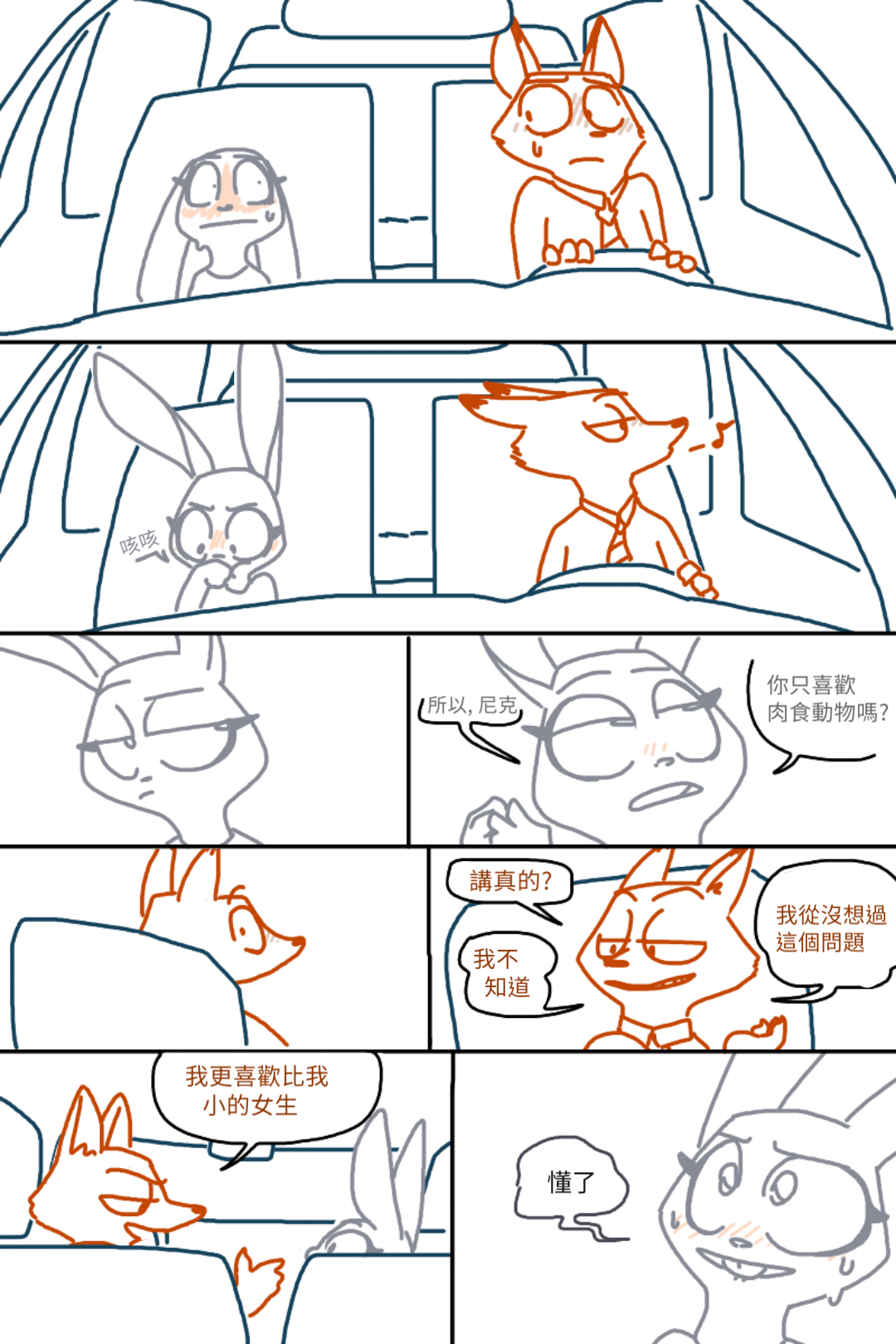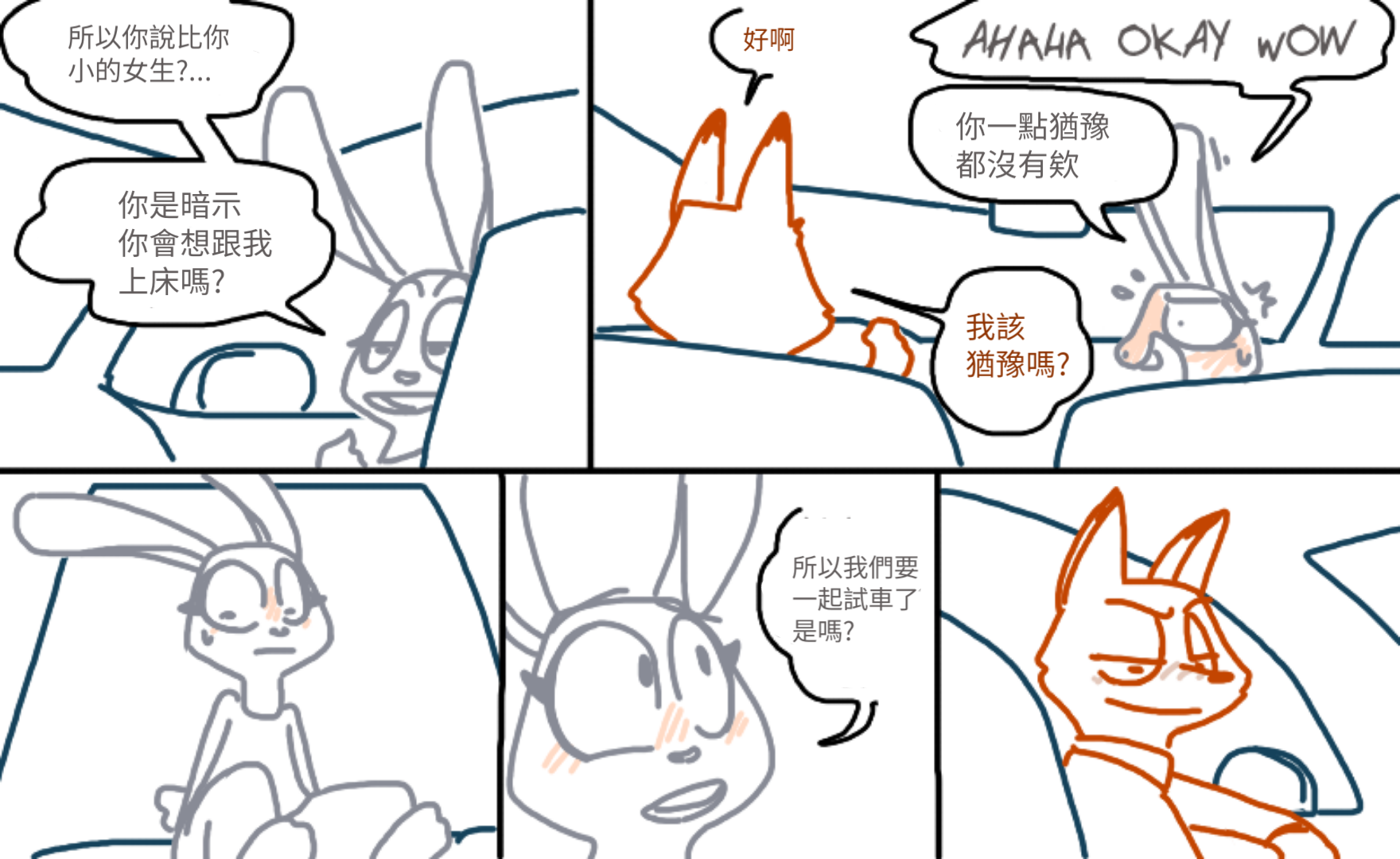Feed aggregator
COVID-19 and Furries: A situational overview of April
S8E25: The Fandom, The Rona, and You - Roo is joined by Lokai and Radix of the Bunker Club podcast to discuss the importance of community, and how the current COVID-19 pandemic is impact awareness of and change in our communities! We read your emails,
NOW LISTEN!
SHOW NOTES
SPECIAL THANKS
Radix and Lokai of the Bunker Club Podcast. Go give it a listen!
Kit
JakeFoXx
Codex
Plug
Viry
Shane
TG
Kriv
PATREON LOVE
The following people have decided this month’s Fur What It’s Worth is worth actual cash! THANK YOU!
Get Stickered Tier Supporters
Nuka goes here
Kit, Jake Fox, Nuka (Picture Pending), Ichi Okami, Taz
Fancy Supporter Tier
Rifka, the San Francisco Treat and Baldrik and Adilor
Deluxe Supporters Tier
Guardian Lion and Katchshi and Koru Colt (Yes, him)
Plus Tier Supporters
Skylos
Snares
Simone Parker
Ausi Kat
Chaphogriff
Lygris
Tomori Boba
Bubblewhip
GW
Moss
McRib Tier Supporters
August Otter
MUSIC
Opening Theme: RetroSpecter – Cloud Fields (RetroSpecter Mix). USA: Unpublished, 2018. ©2011-2018 Fur What It’s Worth. Based on Fredrik Miller – Cloud Fields (Century Mix). USA: Bandcamp, 2011. ©2011 Fur What It’s Worth. (Buy a copy here – support your fellow furs!)
Space News Music: Fredrik Miller – Orbit. USA: Bandcamp, 2013. Used with permission. (Buy a copy here – support your fellow furs!)
Fifty Sheds of Grey: Kevin MacLeod – Spy Glass. Licensed under Creative Commons: by Attribution 3.0. Visit Incompetech for more.
Patreon - The Tudor Consort, Inflammatus, Creative Commons, 2010
Closing Theme: RetroSpecter – Cloud Fields (RetroSpecter Chill Mix). USA: Unpublished, 2018. ©2011-2018 Fur What It’s Worth. Based on Fredrik Miller – Cloud Fields (Chill Out Mix). USA: Bandcamp, 2011. ©2011 Fur What It’s Worth. (Buy a copy here – support your fellow furs!) S8E25: The Fandom, The Rona, and You - Roo is joined by Lokai and Radix of the Bunker Club podcast to discuss the importance of community, and how the current COVID-19 pandemic is impact awareness of and change in our communities! We read your emails,
Voyages of Cinrak the Dapper, by A.J. Fitzwater
 The Voyages of Cinrak the Dapper by Sir Julius Vogel Award-winning storyteller A. J. Fitzwater chronicles the adventures of, which may come as no surprise, Cinrak the Dapper! Cinrak doesn’t start out with this title however. The story begins with a young capybara orphan with aspirations to become a pirate. Throughout the seven stories within this collection, we get to see Cinrak come into herself by making friends, finding family, and going on many marvelous adventures. However, don’t come into this story with expectations of typical pirate adventures. While there is certainly the salt of the sea, these stories are no Pirates of the Caribbean styled affair. Often the story makes some fantastic twists on pirating tropes and the idea of the setting in general. It’s mentioned in the foreword, but these stories are designed with the concept of joy in mind. The stories are designed to have drama surrounded with mysteries, the payoffs with scenes of amazement and emotion.The stories do make some large leaps in time, and we do miss some major moments in Cinrak’s life. For example, we do miss how the love of Cinrak’s life and her meet minus some small details. Some might find this disorienting in ways, though others might also enjoy trying to put the pieces of the puzzle together. I wasn’t quite sure if this was a negative myself, though it was a bit disorienting at times.Despite this, the book does contain some marvelous strengths. I have rarely seen a world in a fantasy setting truly so fantastical! Everything comes to life, sometimes quite literally things you would not expect. There are countless species present, both animals and fantasy fare like fairies. Each story seems to unlock one of the many small mysteries of the world, all of which are fun to uncover. Several people would be sold on the four-word premise of the book alone: dapper lesbian capybara pirate. For those that aren’t, I want to look at the dedication for the book. “For the wary, weary traveller. Rest a while.” These stories have the power to uplift anyone needing a boost while sailing the stormy seas of life. I can recommend this book to those looking for well-written queer representation and those needing light reading to bring them some happiness. I enjoyed it quite thoroughly and am quite happy to have it on my shelf!
The Voyages of Cinrak the Dapper by Sir Julius Vogel Award-winning storyteller A. J. Fitzwater chronicles the adventures of, which may come as no surprise, Cinrak the Dapper! Cinrak doesn’t start out with this title however. The story begins with a young capybara orphan with aspirations to become a pirate. Throughout the seven stories within this collection, we get to see Cinrak come into herself by making friends, finding family, and going on many marvelous adventures. However, don’t come into this story with expectations of typical pirate adventures. While there is certainly the salt of the sea, these stories are no Pirates of the Caribbean styled affair. Often the story makes some fantastic twists on pirating tropes and the idea of the setting in general. It’s mentioned in the foreword, but these stories are designed with the concept of joy in mind. The stories are designed to have drama surrounded with mysteries, the payoffs with scenes of amazement and emotion.The stories do make some large leaps in time, and we do miss some major moments in Cinrak’s life. For example, we do miss how the love of Cinrak’s life and her meet minus some small details. Some might find this disorienting in ways, though others might also enjoy trying to put the pieces of the puzzle together. I wasn’t quite sure if this was a negative myself, though it was a bit disorienting at times.Despite this, the book does contain some marvelous strengths. I have rarely seen a world in a fantasy setting truly so fantastical! Everything comes to life, sometimes quite literally things you would not expect. There are countless species present, both animals and fantasy fare like fairies. Each story seems to unlock one of the many small mysteries of the world, all of which are fun to uncover. Several people would be sold on the four-word premise of the book alone: dapper lesbian capybara pirate. For those that aren’t, I want to look at the dedication for the book. “For the wary, weary traveller. Rest a while.” These stories have the power to uplift anyone needing a boost while sailing the stormy seas of life. I can recommend this book to those looking for well-written queer representation and those needing light reading to bring them some happiness. I enjoyed it quite thoroughly and am quite happy to have it on my shelf! Back to Fraggle Rock
While we’re all huddled in our caves — why not visit with some friendly creatures who dance in theirs? Apple TV+ and the Jim Henson Company have brought back the stars of the beloved series Fraggle Rock in a new collection of shorts called Fraggle Rock: Rock On! “The Fraggles might be apart in separate caves, but they can still find ways to have fun together! Join Gobo, Red, Boober, Mokey, Wembley, and Uncle Traveling Matt for stories and songs that show everyone how we’re all connected.” Fun fact: How do you produce a new show when everyone is still in lock-down? Simple — the entire show is filmed on iPhones from the production staff’s homes and garages. Modern technology! Here’s a review over at Slashfilm, which includes the trailer.

image c. 2020 The Jim Henson Company
[Live] The Glass Half

Are you a glass half type of person? More banter to keep you hopefully entertained during a difficult time. *hugs*
FurCast is sponsored by Twin Tail Creations. Use coupon codes REDWOLF or BLUEFOX to save 15% on silicone products during checkout. Free FurCast Themed Colorations are also available which can be applied as a color choice to your toy purchase.
Link Roundup:- Beastars voice actors do a commentary stream
- Quarantinestars
- Another update from Anthrocon (Since this episode’s recording Anthrocon has officially canceled)
- Mom makes penis face masks to raise money
- Telegram hits 400 million users
- New Unluckiest Person in Human History
- Museums Battle on Twitter with their Creepiest Objects
- Scientists Shave Spider Legs
- Seashells Pile up on Beaches from Lack of Tourists
- Farmers are Renting Out Animals on Webcams to Crash Zoom Meetings
- I Tried Not to Cum While Playing the Adult Games Advertised on Pornhub
Robecast! - The Final Fantasy 7 Anime Nostolgiabomb - another latenight stream w/ our fans! Join us Sa…
another latenight stream w/ our fans! Join us Saturday as Alkali & Boozy play Civ 6 together at 10am! If you enjoy, please throw a buck at us on Patreon! -- https://www.patreon.com/draggetshow all of our audio podcasts at https://soundcloud.com/the-dragget-show You can also find us on Spotify, Stitcher, iTunes & wherever you find podcasts! We have some great newshirts & merch from Merch Minion - https://dragget.merchminion.com/ Dragget Show telegram chat: https://t.me/draggetshow Robecast! - The Final Fantasy 7 Anime Nostolgiabomb - another latenight stream w/ our fans! Join us Sa…
小羅的獸/毛雜圖合集

摸摸摸摸摸摸摸摸摸摸摸摸摸摸摸摸摸摸摸摸摸摸摸摸摸摸摸摸摸摸摸摸
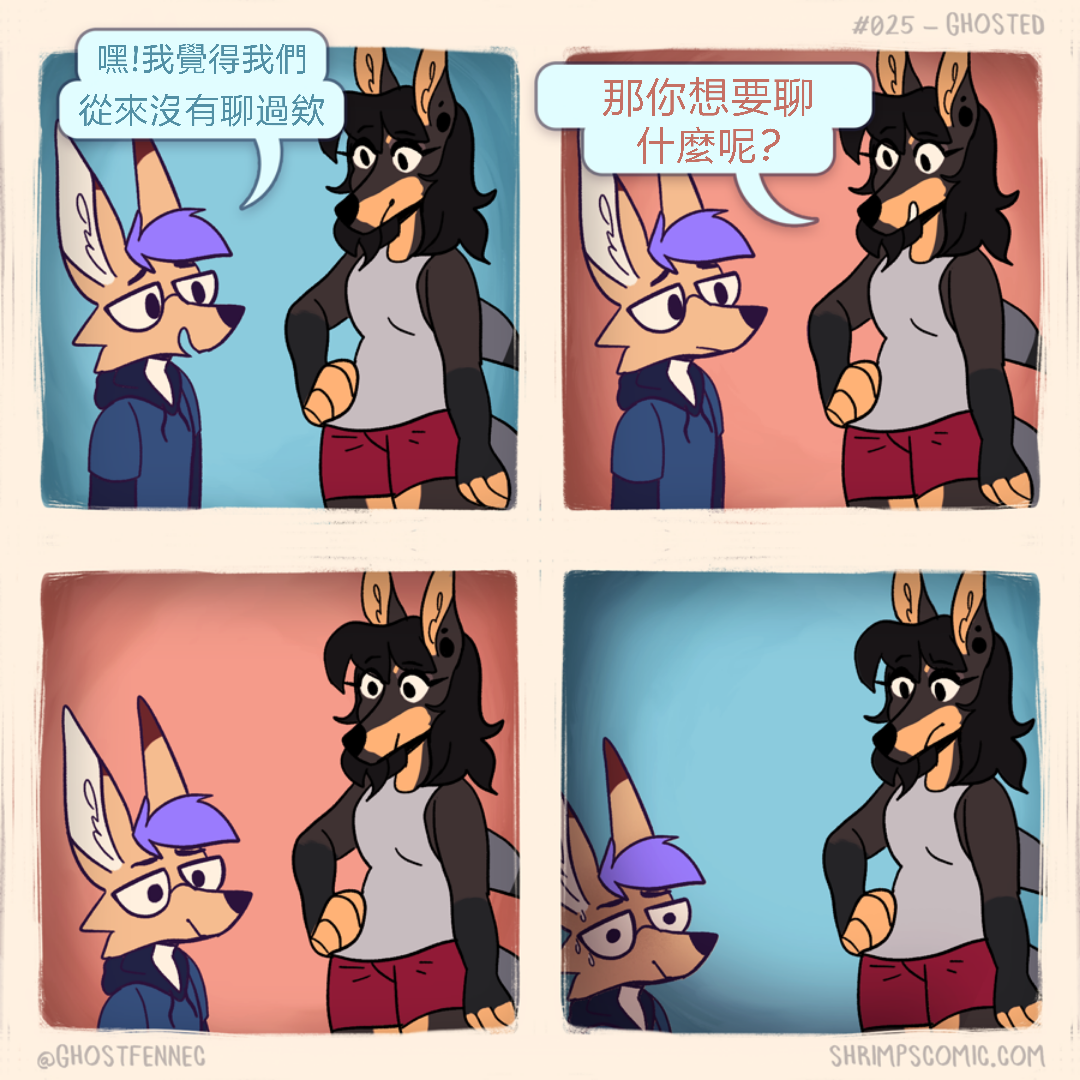
作者: https://twitter.com/ghostfennec

你是個成熟的繪圖板了 該自己畫圖了

不過我不知道平常人有多大就是ㄌ
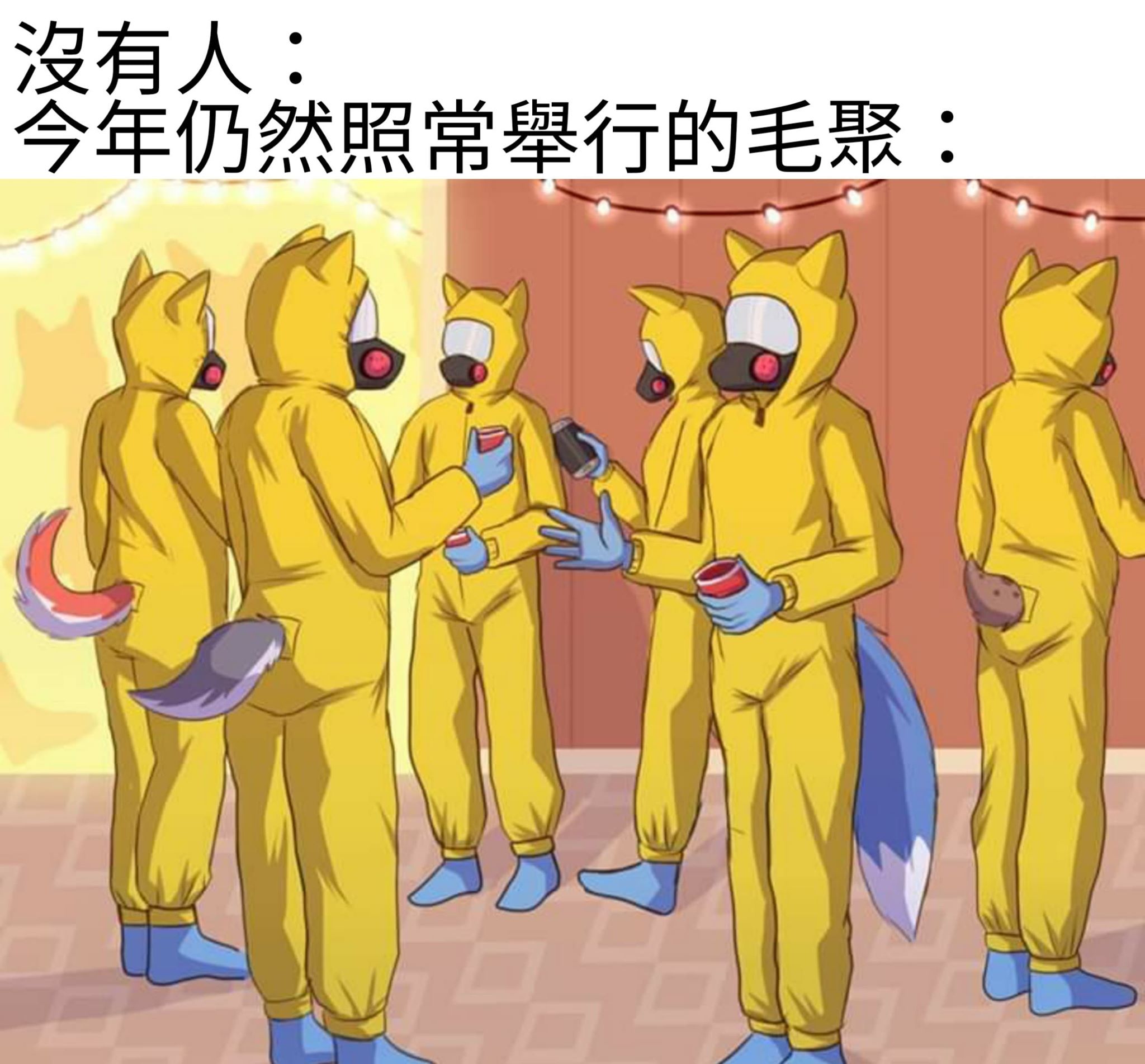
今年主題

有前途的比利
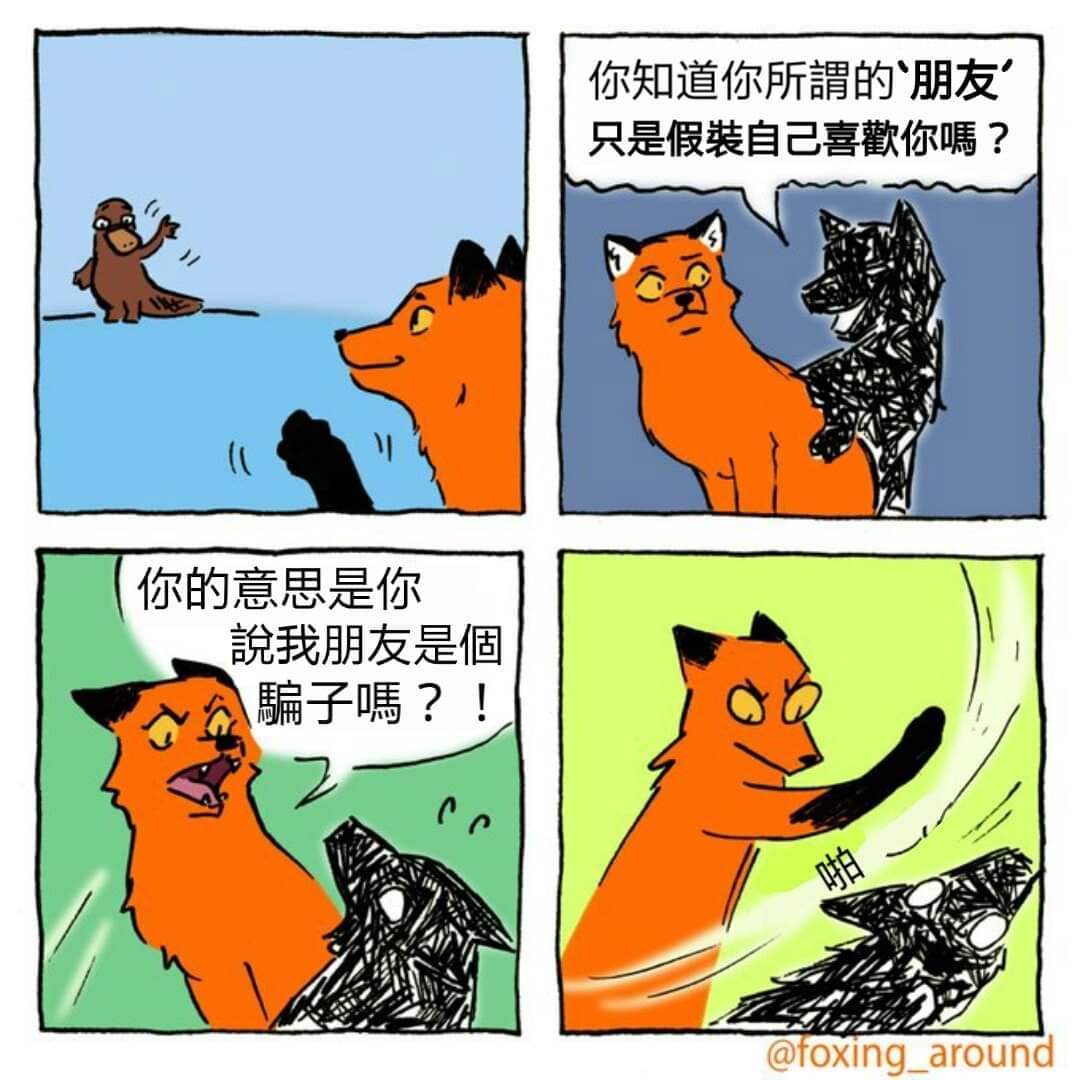
你這 臭婊
出處: https://twitter.com/foxing_around/status/1161720706247380992?s=20
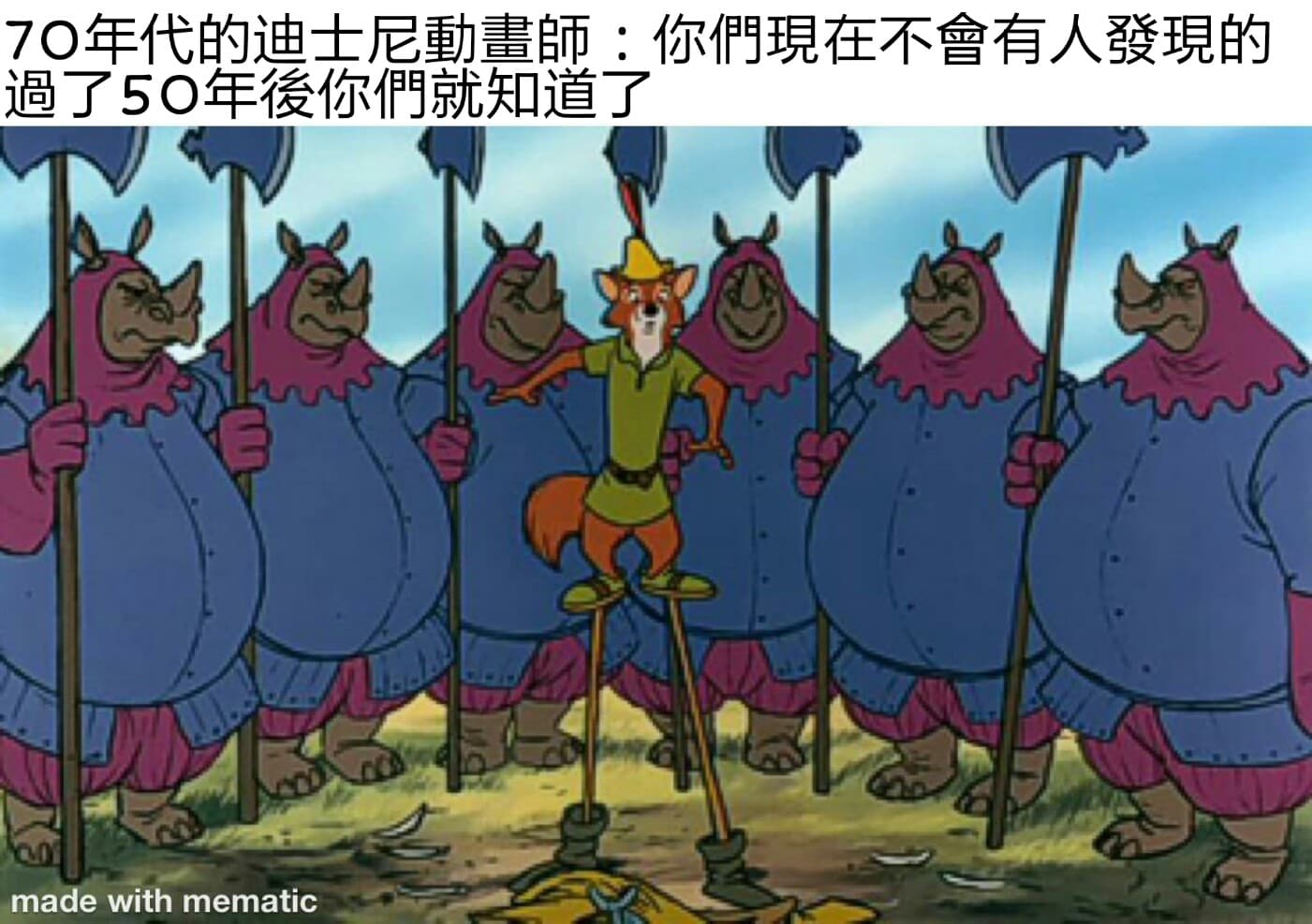
童年崩壞
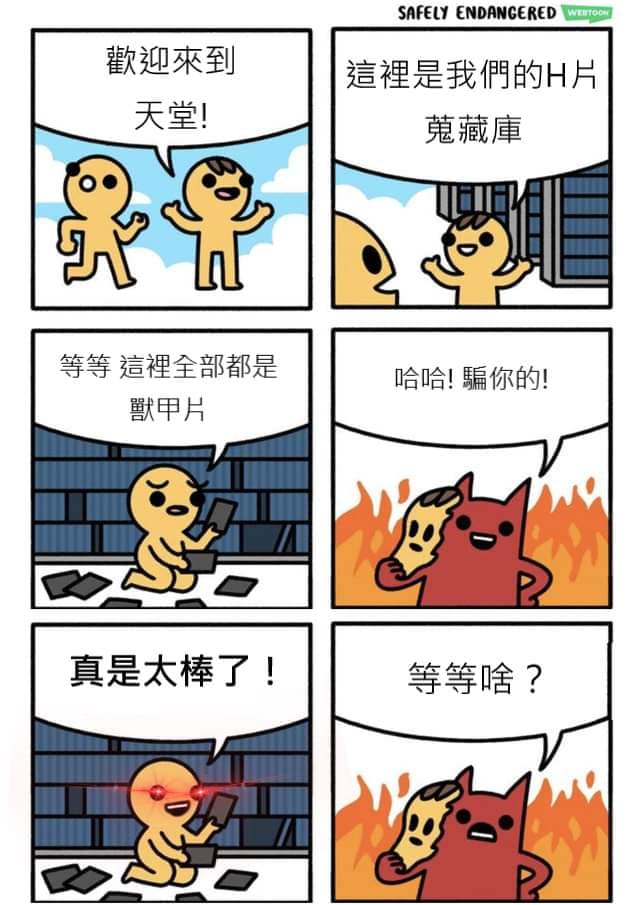
我想下地獄了
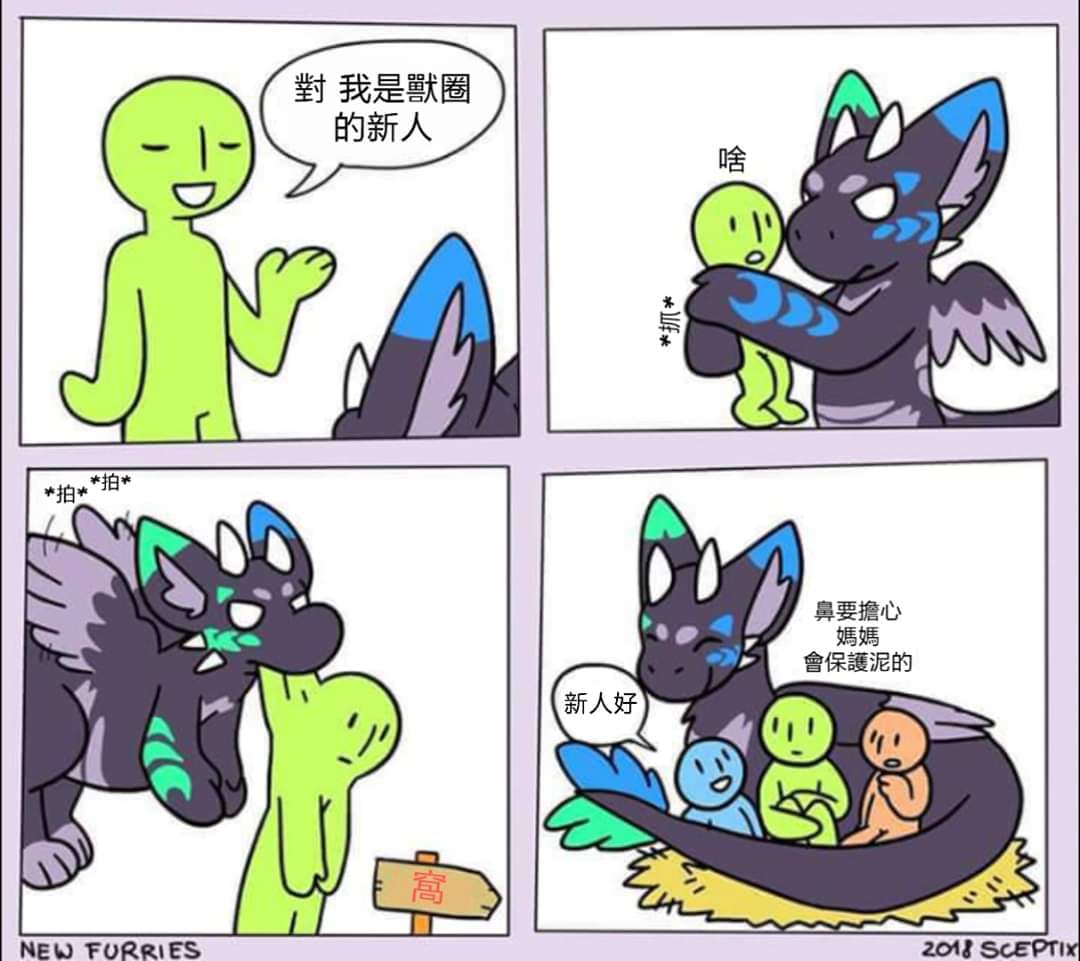
我想當新人

上萬塊的地毯

阿斯
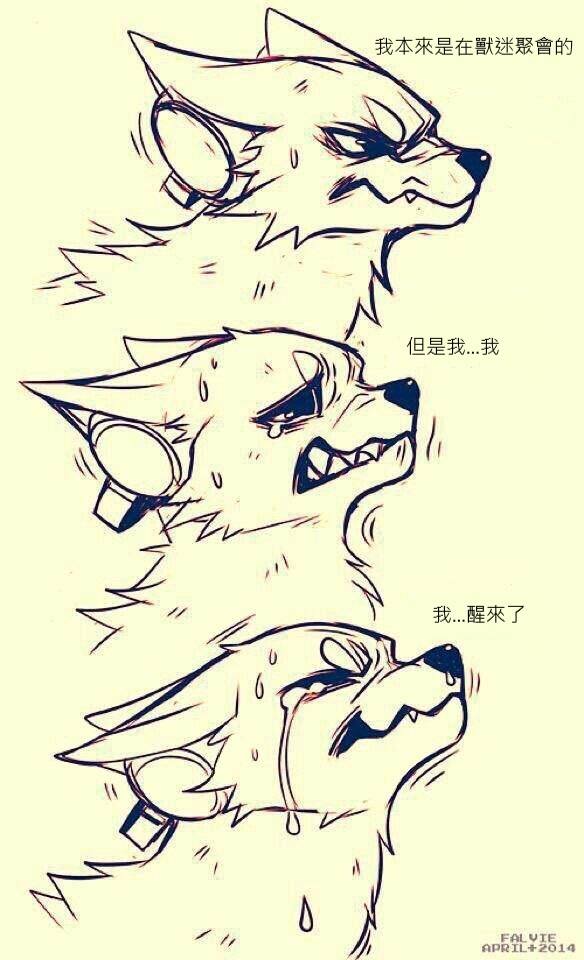
嗚嗚嗚嗚嗚嗚嗚

沒辦法 只有這件
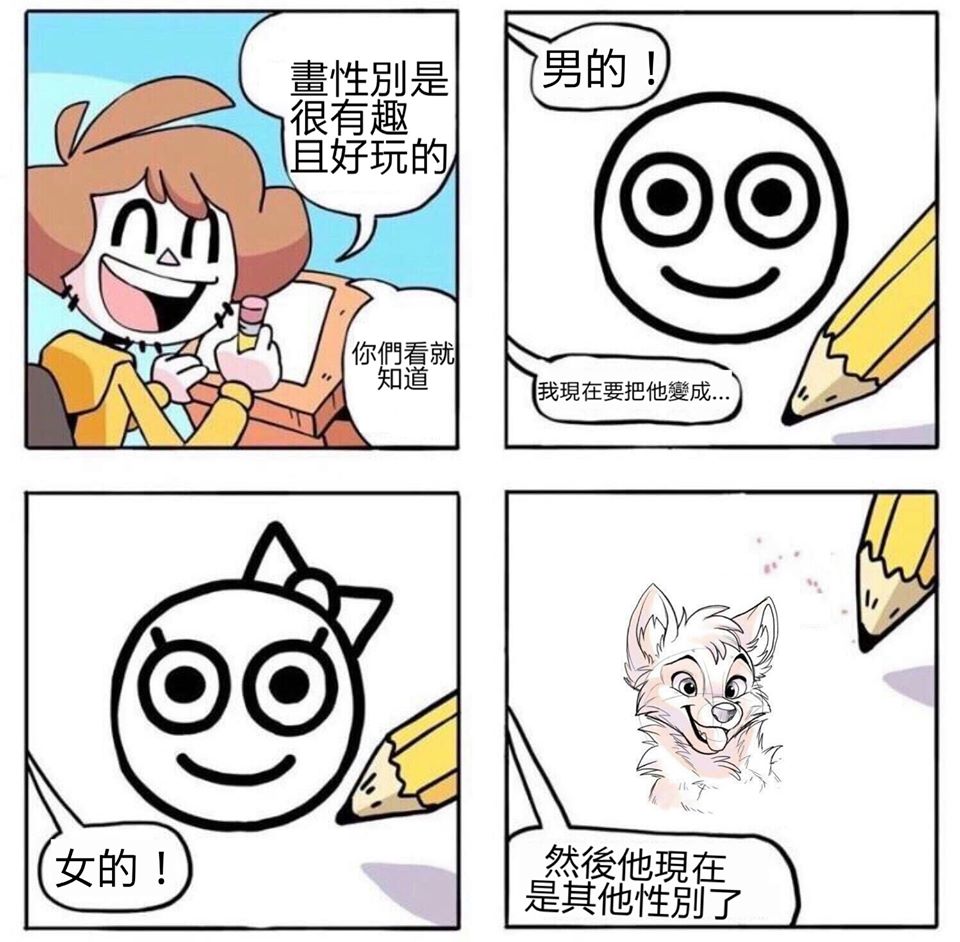
這超越性別了吧
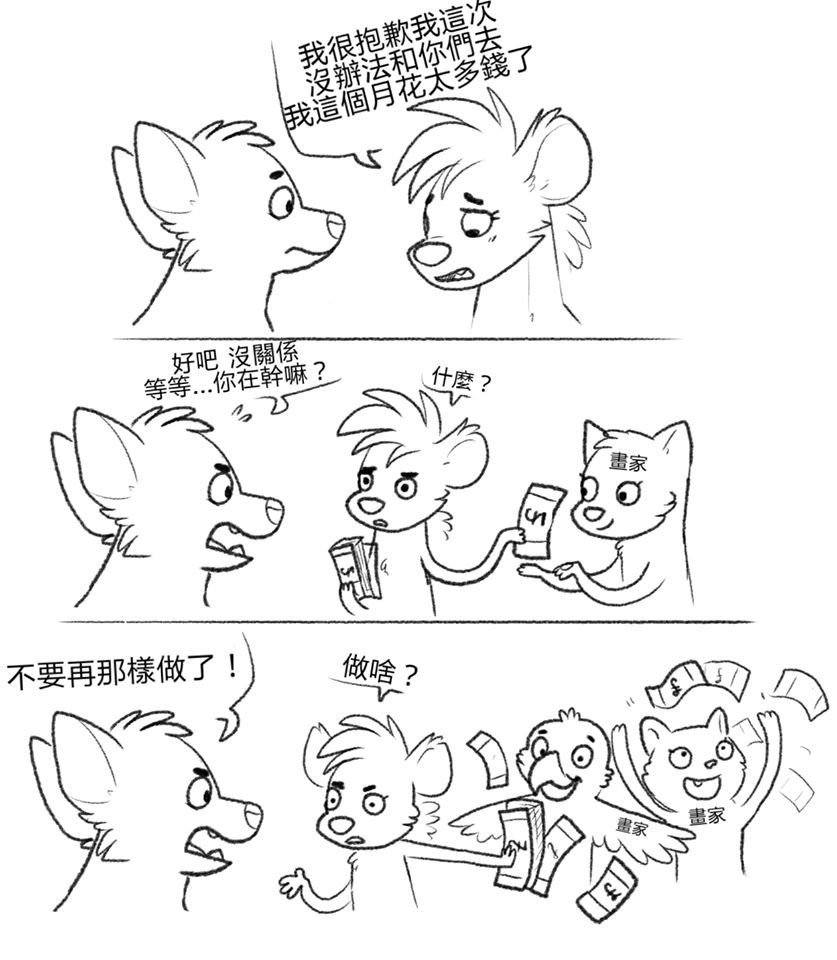
出處: https://twitter.com/Kitchiki

難受
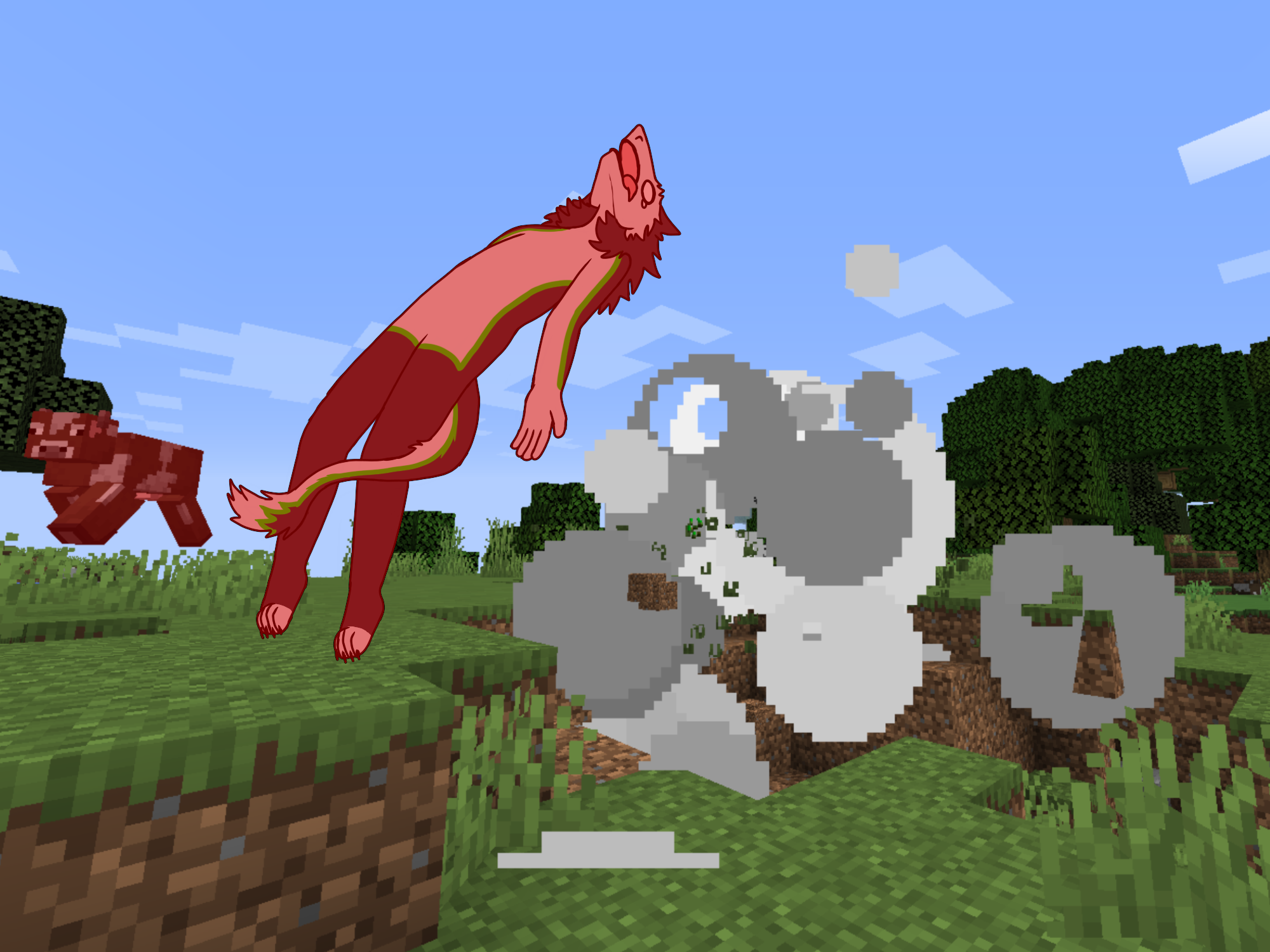
Oof

不知道ㄟ
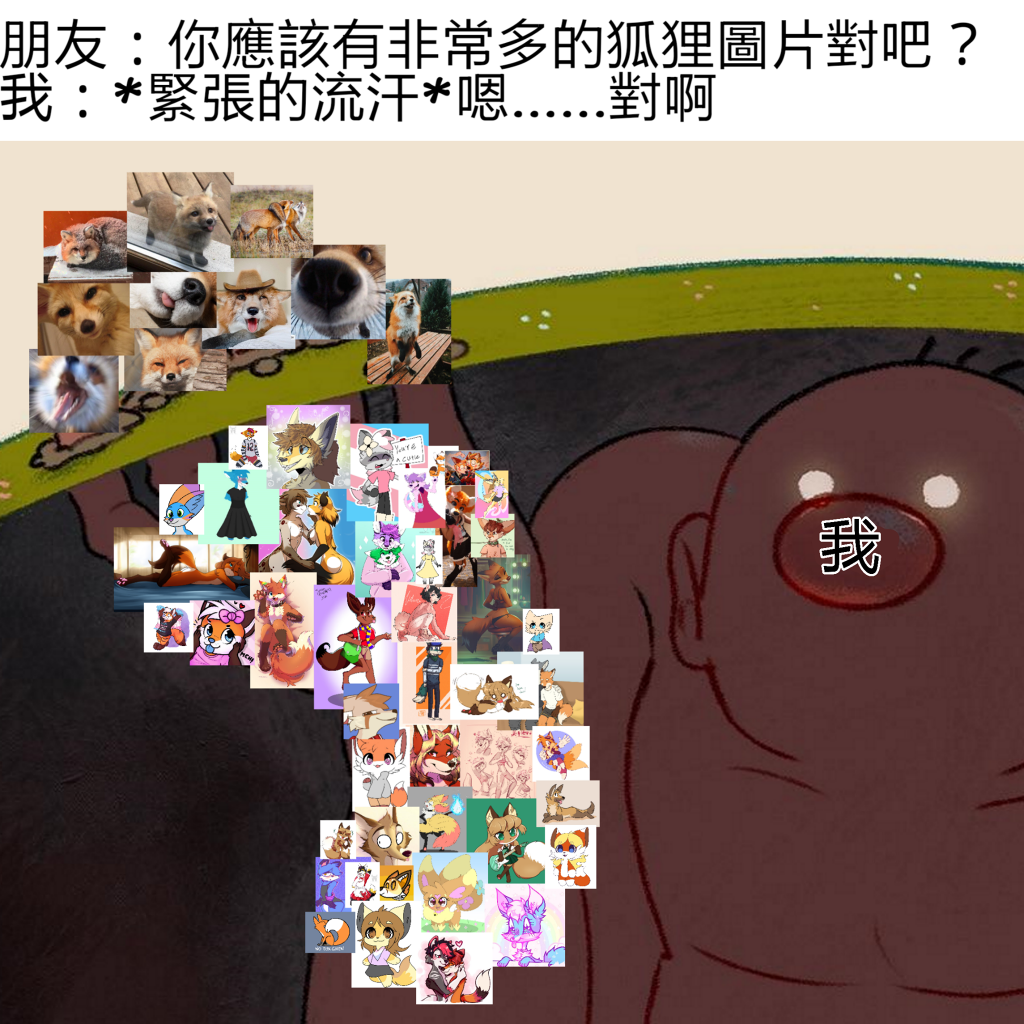
恩 對 狐狸
A pawsitive goal reached: US$17,004 raised for EF2020 charity partner
COVID-19 and Furries: Move events down in the past two weeks
Forget depressing news, watch these 90’s animated bunnies who help kids stay safe!

Current news got ya bothered? Take a break with a forgotten 90’s cartoon of total radness!
For many suburban kids in the 80’s and 90’s, riding a bike to the mall was living the dream, along with going to the video store and renting popcorn sci-fi movies, miniature golfing, or playing the TMNT arcade game at the pizza parlor (maybe while rocking out with Chuck E. Cheese.)
Let all of those vibes come at you from Bert and Gert, the bunnies in kneepads with flipped up hats who ride hoverboards, like in Back To the Future Part II. They’re a brother and sister on a mission, but who sent them? Whoever it was, they trust these bunnies to spy on kids using radar wrist watches more advanced than any smartphone yet invented. WHOAH!
Why do they spy on kids? During the boppin’ theme song, we learn that it’s to protect them — from snakes, lightning and optical illusions (??) — but keep watching. This is the 80’s/90’s Stranger Danger genre. It’s not the boring After School Special kind with terrible acting though; this is pure, uncut cartoon magic. It has neon “wonky” aesthetics with the mellifluous voices and irresistible coolness of cereal mascots you wish were your best friends forever.
What kid wants to get in trouble if these bunnies teach them how to stay safe? I know I’M never talking to a stranger again. I love this so much, I wish I had a fursona like this (and it can happen, because that’s what furry fandom is for!)
That’s the full length 7:00 cartoon. Youtube also has :30 TV spots edited from it to air during fun kid shows on Canadian TV. It’s from a VHS handed out by Canadian Tire, which is the other store Canada has besides Tim Horton’s. (Oh, I think they also have a beer store, but kids can’t go there until they’re big enough to ride a moose by themselves.)
Thanks to Hugo The Pink Cat, Quebecs furry artist, for sharing this maple-syrup sweet piece of Canadian animation we chatted about.
Hugo: I think these Canadian PSAs may have had a hand in me being furry later on. They also made me realize I hadn’t seen Block Parents signs in AGES. It was a program in Canada where you could be designated as a safe place where children in a risky situation could go. My aunt was one when I was a kid. After looking up their website, I understand why. You have to pay to become a block parent (but it’s supposed to be a volunteer job.)
Patch: Yay for happy futurebunnies with that wonky 90’s design. Compared to overly rendered furries with abs, I want more cute simple flat color design. I would eat up a whole comic drawn like this. And there’s much great Canadian animation…
Hugo: Actually I want to find out who animated this. I’m pretty sure that whoever voiced the male rabbit I’ve heard more recently in OTHER stuff, like his voice is SO familiar.
Research actually does lead down a rabbit hole. The animation came from “Bear Spots” (as in TV Spots), an advertising branch of Nelvana, the Canadian animation giant that produced hundreds of TV shows including lots with furry interest.
Gert and Bert were the brainchild of a producer there — and came from a real-life tragedy with her child. They actually represent an entire era of culture, and however sad the story behind it is, they help the memory of a kid to live on in a positive way. Buzzfeed has a good article about this — (warning, it does have intense content so I’m only linking out.) Dive in if you want to learn what’s behind the colorful cartoon world where kids don’t just fear strangers, they have radical bunny friends empower them to use their radars for good.
Like the article? These take hard work. For more free furry news, please follow on Twitter or support not-for-profit Dogpatch Press on Patreon. Want to get involved? Share news on these subreddits: r/furrydiscuss for anything — or r/waginheaven for the best of the community. Or send guest writing here.
TigerTails Radio Season 12 Episode 19
You Want the Big Guy with Spots on Your Side…
For some time now well-known illustrator Rod Espinosa has been giving us the latest story arch of his Adventure Finders fantasy comic series, called The Edge of Empire. It features, among many other characters, a friendly and helpful gnoll — basically a hyena on steroids. Well now Action Lab Entertainment have gathered this story arch together into a new full-color trade paperback. Take a look over at Graphic Policy for some preview pages.
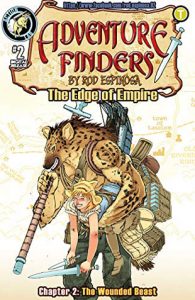
image c. 2020 Action Lab Entertainment
Cóyotl Awards Anthology, ed. Fred Patten
 For those not in the know, the Cóyotl Awards is an annual award run by the Furry Writer's Guild since 2011 to recognize "excellence in anthropomorphic literature". These works can only be nominated and voted upon by members of the FWG (even if the authors are not part of the guild themselves) instead of the general public, kinda making them like the Oscars but for furry literature. This anthology, edited by the late Fred Pattern, collects both winners and nominees for the Best Short Story category from the first seven years of the Cóyotl Awards and represents pretty much the whole spectrum of furry literature. Do you want stories with feral characters? You have them. Do you prefer anthros? You have them. How about comedy, horror, sci-fi, or fantasy? Yes, yes, yes, and yes.The anthology starts with "The Canoe Race" by Daniel and Mary E. Lowd, winner of Best General Short Story for 2011 (only year when this and Best Mature Short Story were separate categories). First published in Stories of Camp Rainfurrest, this is a typical camping story with handicrafts, fire pits, and, yes, canoe races but with the twist being that the campers themselves are animals, and by that I don't mean anthropomorphic animals like in some television shows, but instead real, feral animals. So, you get to see birds doing macramé, bears singing, and even raccoons trying to bribe bobcats with shiny objects. The descriptions of the animals-imitating-humans are short and sweet, with the story as a whole having a lighthearted and wholesome tone--a rare sight in this collection.Next comes "Best of Breed" by Renee Carter Hall, winner of Best Mature Short Story for 2011. First published in Allaso volume 1: Shame, this is a coming-of-age story about the competitive world of Animal Shows but with the almost opposite twist of the previous story as Mina, the main character of this story, is an anthro cat and therefore a sentient creature. At first, everything goes fine for our protagonist, but her world starts crumbling apart once she starts getting into bigger and fancier shows, not in small part by the way Shawn, her human handler, treats her and her sister. The only story in this anthology with any sort of sexual content, though tame and non-explicit, Hall's way of handling Mia's journey into adulthood was gripping and did not let go until the final parts of it.Closing this section is "Dragonman and Lonesome Woman" by Vixxy Fox, nominee for Best General Short Story 2011. In this self-published story, Dan, a truck driver and veteran soldier, encounters three quirky characters in the middle of the desert and embarks with them in a spiritual journey to help their sister, the eponymous Lonesome Woman. A journey which is as much about healing her as it is to heal himself. Introspective at times and comedic at others, Dan's journey is an interesting one, though, all things considered, this could be considered one of the least "furry" of all stories in this anthology.Next we have "Chasing the Spotlight" by Tim Susman, winner of Best Short Story for 2012. First published in ROAR volume 4, this story stars Alex, a news feed podcaster who tries to score an interview with Lon, a mysterious man who underwent a cosmetic surgery to turn into an anthropomorphic animal. Controlled at first, this story slowly spirals into a more gritty one about regret and conspiracy theories as it goes along. Personally, one of my favorite stories in this collection, even if only because of all the possible setups it presents that I'd hope to see expanded upon eventually.Accompanying the previous story is "Rearview" by Sean Silva, nominee for Best Short Story 2012. First published in Allaso volume 2: Shame, this is also the first horror piece in the anthology. Ben, a troubled pig on the run, meets an aggressive wolf on the road after his car breaks down in this short story about the dangers of hitchhiking. From the onset, we can tell that something's not right in all of this, and Silva's handle of the suspense carries the story perfectly until its inevitable outcome. "Fox in the Hen House" by Mary E. Lowd is the winner of Best Short Story for 2013. First published in Dancing in the Moonlight: RainFurrest 2013 Charity Anthology, this nature vs nurture story focuses on Henry, a feral fox kit who gets adopted by several chickens, neither being aware of what the other’s species is. Just like "The Canoe Race", this is more of a sweet and lighthearted story that progressively gets darker as Henry grows older and it becomes more readily apparent to everyone that there might be something different about him.Closing this section is "Son of the Blood Moon" by Bill 'Hafoc' Rogers, nominee for Best Shot Story 2013. First published in Rabbit Valley's Trick or Treat, this story follows River, an aggressive, dominant, and charming alpha man who goes to a party in spite of his mother's warnings to never go out during a full moon. One of the "Trick" stories in that anthology, River will need to decide what to do after being invited to be part of a ritual by the mysterious Rhiannon, a ritual which involves a hefty price to pay. While a bit formulaic at times, the end was surely able to catch me by surprise."Jackalope Wives" by Ursula Vernon, aka T. Kingfisher, is the winner of Best Short Story for 2014. First published in Apex Magazine issue 56, this is the story of a boy, his grandma, and a jackalope girl that was caught by the former, or did he? In the end, it's up to Grandma Harken to fix the boy's mistakes and free the jackalope from the pain brought upon by her own blood. Another story that does not feel as "furry" as it could be, but that also makes it up by its modern take on an age old myth.Next is "Pavlov's House" by Malcolm Cross, nominee for Best Short Story 2014. First published in the online magazine Strange Horizons, this story follows the narration of Sokolai, one of several bio-engineered anthropomorphic dog soldiers who, along with his brothers and a human family, is trapped with no food or water sources nearby. Unable to leave because of the revolutionaries patrolling the streets, Sokolai and his brothers must struggle with the programming they received even before they were born. Our unreliable protagonist’s account of the events that happened and their aftermaths can be hard to read at times, but it's this crudeness that makes the story what it is.Changing the formula a little is "The Analogue Cat" by Alice 'Huskyteer' Dryden, winner of Best Short Story for 2015. First published in The Furry Future, this story chronicles the whole life of Tozer, a second-generation Bengal Pet all the way from his birth as a Pet (the bio-engineered organisms created to replace another set of creatures known as Bots) to the drastic changes in his life once the newer generations succeed in getting Pets equal rights. However, what really makes this story stand out is that it uses a second person POV for its narration, making the journey of you, the reader, as The Analog Cat feel more personal.Accompanying the previous story is "Muskrat Blues" by Ianus Wolf, nominee for Best Short Story 2015. First published in Inhuman Acts, this noir story follows Mike Harrison, a pig and private investigator whose old friend Alex Richards was recently murdered. Set in a world where predation is a thing, even if not common; the police dismiss the case and it's up to Mike to sniff out the true culprit. A story that might be a little more familiar to those who are more in the known with the genre, but that kept me guessing with every twist as it unfolded.Next is "400 rabbits" by Alice 'Huskyteer' Dryden, winner of Best Short Story for 2016. First published in Gods With Fur, this is the story of Eighty-Six, one of four hundred Aztec rabbit gods in charge of drinking, drunken revelry, and its effects. However, as we all know, there's more to life than drinking as Eighty-Six, patron god of "attempting to chat up your best friend's betrothed", finds out when he's forced to go sober for the first time in his life, getting a new perspective on the human world and life as a whole. As can be easily glanced by our main character's title, this a comedy through and through, and one that gives an interesting insight of the role alcohol has on our lives, all from the perspective of what could be considered an under-represented culture in the fandom.Closing this section is "The Torch" by Chris 'Sparf' Williams, nominee for Best Short Story 2016. First published in ROAR volume 7, this is the story of Rob Cantor, former star of an old campy television show about a police-affiliated superhero which is soon to get rebooted, though in a darker and edgier fashion (any similarities with real life are purely coincidental). Rob, a dalmatian, is attending the same convention as his replacement and has to come to terms with his life and what all these new changes mean for him. With an air of nostalgia, and I don't mean just when our main character remembers his golden days, this story does a good job going through the nitty-gritty details of what is it that makes a fandom, and how it affects the lives of those involved in it.Finally, the last winner in the anthology is "Behesht" by Dwale, winner of Best Short Story for 2017. First published in ROAR volume 8, this is a post-apocalyptic story of the Dying Earth variety. Farad, a bio-engineered jerboa, chronicles the events and interviews that he experiences alongside a caravan that’s heading towards the eponymous hidden garden—Heaven itself. So, yes, this means that it's an anthology within an anthology! As expected of a story of this genre, the tone can be pretty bleak at times as we see our protagonists continue on their endless journey, which may or may not have the results they're looking for. Another story for which I wish to be expanded upon, whatever its outcome may be.The first 2017 nominee is "The Moon Fox" by Amy Fontaine. First published in the online magazine Cosmic Roots and Eldritch Shores, this modern fairy tale follows the adventures of the titular Moon Fox after he crashes on Earth as he tries to find his place in our world. Somewhere where he can be himself. Be it at a farm, at a circus, or at an audition, Moon Fox’s always trying his best. One of the most light-hearted and wholesome stories in the whole anthology, with an ending that befits its genre.Last but not least is "The Ouroboros Plate" by Slip Wolf, also nominated for Best Short Story 2017. First published in Bleak Horizons, this story follows Imperial Agent Hallord, a weasel on a mission to check up on a project by the Emperor, but whose plans get a wrench thrown in the works when the scientist he was meant to encounter, Doctor Liskar, is found dead in her office. Complicating matters further is that the space station where they're located is set to destruct in a couple hours. A whydunit where all the pieces fit when you understand its true premise, but that keeps you on your toes until you do.As mentioned near the beginning of this review, pretty much everything you may want to see is here in one way or another with some very few exceptions, and the fact that these were curated by writers and editors themselves means that you can be sure of the overall quality of every story represented. If you're new to furry literature as a whole, this is definitely the book for you. If you're not, even if you've already read all of these, you should try getting a copy too. The quality is there, the variety is there, and you can see how the storytelling styles and the fandom evolved throughout the decade.
For those not in the know, the Cóyotl Awards is an annual award run by the Furry Writer's Guild since 2011 to recognize "excellence in anthropomorphic literature". These works can only be nominated and voted upon by members of the FWG (even if the authors are not part of the guild themselves) instead of the general public, kinda making them like the Oscars but for furry literature. This anthology, edited by the late Fred Pattern, collects both winners and nominees for the Best Short Story category from the first seven years of the Cóyotl Awards and represents pretty much the whole spectrum of furry literature. Do you want stories with feral characters? You have them. Do you prefer anthros? You have them. How about comedy, horror, sci-fi, or fantasy? Yes, yes, yes, and yes.The anthology starts with "The Canoe Race" by Daniel and Mary E. Lowd, winner of Best General Short Story for 2011 (only year when this and Best Mature Short Story were separate categories). First published in Stories of Camp Rainfurrest, this is a typical camping story with handicrafts, fire pits, and, yes, canoe races but with the twist being that the campers themselves are animals, and by that I don't mean anthropomorphic animals like in some television shows, but instead real, feral animals. So, you get to see birds doing macramé, bears singing, and even raccoons trying to bribe bobcats with shiny objects. The descriptions of the animals-imitating-humans are short and sweet, with the story as a whole having a lighthearted and wholesome tone--a rare sight in this collection.Next comes "Best of Breed" by Renee Carter Hall, winner of Best Mature Short Story for 2011. First published in Allaso volume 1: Shame, this is a coming-of-age story about the competitive world of Animal Shows but with the almost opposite twist of the previous story as Mina, the main character of this story, is an anthro cat and therefore a sentient creature. At first, everything goes fine for our protagonist, but her world starts crumbling apart once she starts getting into bigger and fancier shows, not in small part by the way Shawn, her human handler, treats her and her sister. The only story in this anthology with any sort of sexual content, though tame and non-explicit, Hall's way of handling Mia's journey into adulthood was gripping and did not let go until the final parts of it.Closing this section is "Dragonman and Lonesome Woman" by Vixxy Fox, nominee for Best General Short Story 2011. In this self-published story, Dan, a truck driver and veteran soldier, encounters three quirky characters in the middle of the desert and embarks with them in a spiritual journey to help their sister, the eponymous Lonesome Woman. A journey which is as much about healing her as it is to heal himself. Introspective at times and comedic at others, Dan's journey is an interesting one, though, all things considered, this could be considered one of the least "furry" of all stories in this anthology.Next we have "Chasing the Spotlight" by Tim Susman, winner of Best Short Story for 2012. First published in ROAR volume 4, this story stars Alex, a news feed podcaster who tries to score an interview with Lon, a mysterious man who underwent a cosmetic surgery to turn into an anthropomorphic animal. Controlled at first, this story slowly spirals into a more gritty one about regret and conspiracy theories as it goes along. Personally, one of my favorite stories in this collection, even if only because of all the possible setups it presents that I'd hope to see expanded upon eventually.Accompanying the previous story is "Rearview" by Sean Silva, nominee for Best Short Story 2012. First published in Allaso volume 2: Shame, this is also the first horror piece in the anthology. Ben, a troubled pig on the run, meets an aggressive wolf on the road after his car breaks down in this short story about the dangers of hitchhiking. From the onset, we can tell that something's not right in all of this, and Silva's handle of the suspense carries the story perfectly until its inevitable outcome. "Fox in the Hen House" by Mary E. Lowd is the winner of Best Short Story for 2013. First published in Dancing in the Moonlight: RainFurrest 2013 Charity Anthology, this nature vs nurture story focuses on Henry, a feral fox kit who gets adopted by several chickens, neither being aware of what the other’s species is. Just like "The Canoe Race", this is more of a sweet and lighthearted story that progressively gets darker as Henry grows older and it becomes more readily apparent to everyone that there might be something different about him.Closing this section is "Son of the Blood Moon" by Bill 'Hafoc' Rogers, nominee for Best Shot Story 2013. First published in Rabbit Valley's Trick or Treat, this story follows River, an aggressive, dominant, and charming alpha man who goes to a party in spite of his mother's warnings to never go out during a full moon. One of the "Trick" stories in that anthology, River will need to decide what to do after being invited to be part of a ritual by the mysterious Rhiannon, a ritual which involves a hefty price to pay. While a bit formulaic at times, the end was surely able to catch me by surprise."Jackalope Wives" by Ursula Vernon, aka T. Kingfisher, is the winner of Best Short Story for 2014. First published in Apex Magazine issue 56, this is the story of a boy, his grandma, and a jackalope girl that was caught by the former, or did he? In the end, it's up to Grandma Harken to fix the boy's mistakes and free the jackalope from the pain brought upon by her own blood. Another story that does not feel as "furry" as it could be, but that also makes it up by its modern take on an age old myth.Next is "Pavlov's House" by Malcolm Cross, nominee for Best Short Story 2014. First published in the online magazine Strange Horizons, this story follows the narration of Sokolai, one of several bio-engineered anthropomorphic dog soldiers who, along with his brothers and a human family, is trapped with no food or water sources nearby. Unable to leave because of the revolutionaries patrolling the streets, Sokolai and his brothers must struggle with the programming they received even before they were born. Our unreliable protagonist’s account of the events that happened and their aftermaths can be hard to read at times, but it's this crudeness that makes the story what it is.Changing the formula a little is "The Analogue Cat" by Alice 'Huskyteer' Dryden, winner of Best Short Story for 2015. First published in The Furry Future, this story chronicles the whole life of Tozer, a second-generation Bengal Pet all the way from his birth as a Pet (the bio-engineered organisms created to replace another set of creatures known as Bots) to the drastic changes in his life once the newer generations succeed in getting Pets equal rights. However, what really makes this story stand out is that it uses a second person POV for its narration, making the journey of you, the reader, as The Analog Cat feel more personal.Accompanying the previous story is "Muskrat Blues" by Ianus Wolf, nominee for Best Short Story 2015. First published in Inhuman Acts, this noir story follows Mike Harrison, a pig and private investigator whose old friend Alex Richards was recently murdered. Set in a world where predation is a thing, even if not common; the police dismiss the case and it's up to Mike to sniff out the true culprit. A story that might be a little more familiar to those who are more in the known with the genre, but that kept me guessing with every twist as it unfolded.Next is "400 rabbits" by Alice 'Huskyteer' Dryden, winner of Best Short Story for 2016. First published in Gods With Fur, this is the story of Eighty-Six, one of four hundred Aztec rabbit gods in charge of drinking, drunken revelry, and its effects. However, as we all know, there's more to life than drinking as Eighty-Six, patron god of "attempting to chat up your best friend's betrothed", finds out when he's forced to go sober for the first time in his life, getting a new perspective on the human world and life as a whole. As can be easily glanced by our main character's title, this a comedy through and through, and one that gives an interesting insight of the role alcohol has on our lives, all from the perspective of what could be considered an under-represented culture in the fandom.Closing this section is "The Torch" by Chris 'Sparf' Williams, nominee for Best Short Story 2016. First published in ROAR volume 7, this is the story of Rob Cantor, former star of an old campy television show about a police-affiliated superhero which is soon to get rebooted, though in a darker and edgier fashion (any similarities with real life are purely coincidental). Rob, a dalmatian, is attending the same convention as his replacement and has to come to terms with his life and what all these new changes mean for him. With an air of nostalgia, and I don't mean just when our main character remembers his golden days, this story does a good job going through the nitty-gritty details of what is it that makes a fandom, and how it affects the lives of those involved in it.Finally, the last winner in the anthology is "Behesht" by Dwale, winner of Best Short Story for 2017. First published in ROAR volume 8, this is a post-apocalyptic story of the Dying Earth variety. Farad, a bio-engineered jerboa, chronicles the events and interviews that he experiences alongside a caravan that’s heading towards the eponymous hidden garden—Heaven itself. So, yes, this means that it's an anthology within an anthology! As expected of a story of this genre, the tone can be pretty bleak at times as we see our protagonists continue on their endless journey, which may or may not have the results they're looking for. Another story for which I wish to be expanded upon, whatever its outcome may be.The first 2017 nominee is "The Moon Fox" by Amy Fontaine. First published in the online magazine Cosmic Roots and Eldritch Shores, this modern fairy tale follows the adventures of the titular Moon Fox after he crashes on Earth as he tries to find his place in our world. Somewhere where he can be himself. Be it at a farm, at a circus, or at an audition, Moon Fox’s always trying his best. One of the most light-hearted and wholesome stories in the whole anthology, with an ending that befits its genre.Last but not least is "The Ouroboros Plate" by Slip Wolf, also nominated for Best Short Story 2017. First published in Bleak Horizons, this story follows Imperial Agent Hallord, a weasel on a mission to check up on a project by the Emperor, but whose plans get a wrench thrown in the works when the scientist he was meant to encounter, Doctor Liskar, is found dead in her office. Complicating matters further is that the space station where they're located is set to destruct in a couple hours. A whydunit where all the pieces fit when you understand its true premise, but that keeps you on your toes until you do.As mentioned near the beginning of this review, pretty much everything you may want to see is here in one way or another with some very few exceptions, and the fact that these were curated by writers and editors themselves means that you can be sure of the overall quality of every story represented. If you're new to furry literature as a whole, this is definitely the book for you. If you're not, even if you've already read all of these, you should try getting a copy too. The quality is there, the variety is there, and you can see how the storytelling styles and the fandom evolved throughout the decade. Khaki Doggy [12 Apr 2020] - South Afrifur Pawdcast

Today we chat to Khaki, podcaster and photographer serving the furry community! We talk furry communities, con events and his podcast, The Voice Of Dog. Find Khaki on Twitter! https://twitter.com/khakidoggy Listen to the Voice of Dog! https://anchor.fm/the-voice-of-dog Find us on Twitter: @South-Afrifur, https://twitter.com/southafrifur, on Tumblr, http://south-afrifur.tumblr.com/, and on Facebook, https://www.facebook.com/southafrifur Also, for more local news, check out the Zafur forums! http://forum.zafur.co.za/
The Ronin Rabbit Returns
Newly released this year, we have a new — or at least “improved” — Usagi Yojimbo series from IDW Publishing called Usagi Yojimbo Color Classics. “This series collects the original early issues of the acclaimed long-running series, now in full color! Every issue will also feature new behind-the-scenes material and art. Whether you’re a long-term Usagi fan or brand new to the adventures of the ronin rabbit, this series will be the perfect addition to your comic library!” Written and illustrated by Stan Sakai, of course, with new colors by Ronda Pattison.
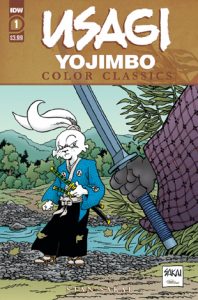
image c. 2020 IDW Publishing
Games By Hand. Egad!
Something interesting has just hit the shelves (so to speak). The award-winning (and Ursa Major Award nominated) game Cuphead has a new tie-in book from Dark Horse Press called — wait for it — The Art of Cuphead. “Get transported back to the golden age of 1930s animation with an art book celebrating the acclaimed run & gun platformer Cuphead! Each page of this curated collection of artwork is designed to capture the vintage look and feel of the Thirties. Take a gander at the game’s traditional hand-drawn, frame-by-frame animation. Peek at the early concepts, production work, and early ideas that went into the making of Cuphead’s characters, bosses, stages, and more! And relive the most cherished and challenging moments of Cuphead and Mugman’s adventure to reclaim their souls from the Devil! Guided by personal insights from game directors Chad and Jared Moldenhauer, take a trip through the Inkwell Isles and discover a new appreciation for Cuphead’s animation style and challenging retro game-play.” It’s available now in hardcover from the Dark Horse web site.
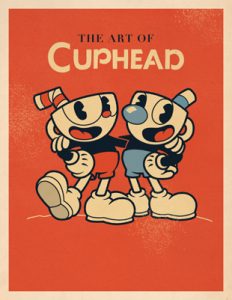
image c. 2020 Dark Horse Press
The Reclamation Project, ed. John R. Robey
 Solarpunk was never a genre I considered reading. I didn’t know what it was or why it was, much less why it was important to people. The name sounds cool, sure, but who’s ever heard of a best-selling solarpunk novel that isn’t under the bigger genre of science fiction? What even is the difference between the two? Where science fiction focuses on the broad idea of possibility with enough technological advancement, John R. Robey says that solarpunk is more about working with the Earth while simultaneously creating a better world for those who are victims of corrupt government. That’s what The Reclamation Project is about, except with furries. If you don’t know what furries are, they’re anthropomorphic animals, or “human-like” animals. And if I just confused you even more, sit down, take a breath, and keep reading. In The Reclamation Project, furries are the least of your problems.The Reclamation Project is about the conflict between humans and furries--also known as zoomorphs--in the world of Ambara Down. Long ago, zoomorphs were created by humans to do things that humans couldn’t do. Then, the flying city of Ambara fell to the ground, causing much destruction but also laying the foundation for many new zoomorph cultures to arise. At some point, the Pax Machina--a powerful AI looking to control everything--grew threatening, creating giant mechanical creatures and taking over the minds of humans and zoomorphs alike. As time went on, zoomorphs inhabited Ambara Down and made it their home, while humans took to their flying cities. Prejudice against zoomorphs slowly formed in flying cities like High Empyros, and soon the zoomorphs’ and the humans’ distrust grew to a dangerous level, causing the leaders of both societies to establish the Reclamation Project, a project aimed to quell the tension. Fourteen authors write about the world of Ambara Down and how the Reclamation Project has affected both human and zoomorph culture. With Pax Machina and other dangers hiding in the shadows, the road to peace is a difficult one.John R. Robey gives quite the exciting start to this anthology with his story titled "Piece of Mind." The time for compromise has begun as Haru, a high-tempered collie and Chief Stewardess of the Prefect’s Office, finds a hoverskiff pilot named Rory, a smart-mouthed calico, to transport the Prefect to High Empyros. Once there, Prefect Durgavati can negotiate plans to look past the furry/human differences and bring peace to Ambara Down--if they manage to get there at all. When a group of bandits ambush the hoverskiff and leave Rory and Haru out in the desert, the two need to rely on each other to save the Prefect, as well as themselves. With a mysterious third party sending shivers down their spines, the hope for peace dwindles in Ambara Down.It’s really the attention to detail that makes this story amazing. Robey is great with describing the world of Ambara Down and its intricacies--hoverskiffs and healing braces, cybernetic attachments and flying cities. You get a clear picture of what the world looks like through these depictions, but it's really the characters that make it all come together. Haru’s role as the Chief Steward contrasts nicely with Rory’s role as a hoverskiff captain because you get to see their vastly different ways of life, and their distinct personalities make for an entertaining story. Every detail builds on the one before it, so when the climax of the story hits, it hits hard. I’d really love to see more of this world.Set in the same world as the first story, "Ambara Blues" by Indigare expands upon the socio-political side of the furry/human conflict. Delmar Nova, a human living on High Empyros, is called by Director Kyla to use his experience in studying zoomorphic cultures to assess how the Reclamation Project in Ambara is proceeding. After realizing he wants more in his life than sterile walls and light pollution, Delmar accepts the job and is transported down to Ambara where he meets the Council liaison and rabbit zoomorph, Tavistad Ridgerunner. When Tav and Del start touring the city, Del is attacked. Tav comes in to save him, but Del realizes not everyone is happy to see a human here. The two must stick together if they want to figure out who’s behind this attack, and what this all means for the future of both civilizations.I really enjoyed Indigare’s take on this world. I wanted to see more of the conflict, and that’s what I got. The first-person perspective is really important because it hones in on Del’s thoughts and feelings about the situation as an outsider. He’s confused about the attack, but also in awe of this new world. That feeling captured me and made it easy for me to understand. However, the dialogue tended to pull me out of that space. It seemed a little...off, and as a result Del’s personality seemed to weaken. When I was in his head I felt what he felt, but that feeling didn’t quite match the words he said out loud. I think it would have flowed better if Del said what came to his mind more often--the descriptions of the cities, and the beautiful flowers he saw. This would produce a more genuine response from Tav and give the two of them room to play off each other and learn about each other, strengthening both their personalities and their relationship.So far, we’ve read about stories that take place on land, but "Insecurity" by L. Rowyn gives us a glimpse of what the solarpunk genre can look like underwater. When Ambara fell, a whole chunk of civilization was crushed beneath its weight. Aawee--a mermaid-type creature simply called a ‘mer’--finds the remains of a GloEx building during their team’s scuba diving mission. They explore a bit inside but become trapped when the front doors of the building slam shut. Kerick, a sedecpus and the team lead, comes to rescue them after their coms fail. With his octopus-like characteristics, Kerick finds a way inside and keeps Aawee company while the rest of his team prepare a drill so they can get out. But things don’t go as planned and the two sea creatures soon find out that the building itself might be more dangerous than they thought.L. Rowyn really went all out with the creativity in "Insecurity." The concepts of the mer and the sedecpus--sedecpi?--are a great addition to the world of Ambara, though I would have liked a little more detail as to how they looked. There was plenty of detail in there--a creature with sixteen arms is hard to forget--but I still found myself getting confused as to how ‘anthro’ they actually were. One thing I found really intriguing was how Rick fit into the story. I think most zoomorphs and humans alike wouldn’t find an AI implant to be a person, but the fact that Kerick does, so much so that he combines his name with his own name, really emphasizes the strength of humanity in such a genre. It’s cool and fun to see how they communicate with each other. It’s also neat to hear how Rick encourages Kerick to get closer to Aawee, using their common characteristic of being trans as a topic of conversation. I didn’t think an AI could be that helpful when it came to such a topic, but I was happily proven wrong. This is a fantastic story!"The Underground Star" by Nenekiri Bookwyrm gives another glimpse of what life looks like in Ambara--this time, underground. Life in the Warrens has been pretty boring for Eli the mouse, but his world changes when he discovers a huge tower of old Reclaimer junk in the tunnels of the Warrens. Entranced by a shiny object glistening on the top of the tower, he comes up with multiple plans on how to retrieve it. With each failure, more time passes and Eli starts to think he may never get the ‘star.’ Between his struggles to get the star and the mystery of his missing friend, Eli has to re-evaluate what he truly wants in life.I think this story was trying to do too many things at once. The plot was centered around Eli and his quest for the star, which I enjoyed until the end. I was left with more questions than answers, which might have been the point. But if that was the point, why didn’t the story emphasize the mystery more? Jack goes missing for a long time and all Eli says about it is, “Life in the Warrens is like that sometimes.” His response seems more like an easy fix to a plot-hole than an actual character telling us what they believe, which would be fine if the story was more about the mystery. There are mysterious things happening in the background, and given Eli’s age I felt like Bookwyrm should have given him something weird to notice if they wanted the story to be about the mystery. As it stands, the story is so focused on Eli getting the star that the mystery aspect falls short. Which, again, wouldn’t be a problem if the ending was more triumphant. The mystery conflicts with the adventure because so much of the story is about his drive to get the star, but when he finally gets it and realizes what it is he just drops it and goes to find Jack, seeming only now to care about his friend. That all being said, I did really enjoy this story. Eli is a bright and persistent character. He tries and fails and tries again, which is enjoyable to read about in the way Bookwyrm described. The mouse had to work out creative ways to get what he wanted, and those ways--working for Ms. Smit, swiping some scrap metal here and there--really added to the atmosphere of the story. Ms. Smit was also a really interesting character. I couldn’t really tell why she was doing what she was doing, but that added to the mystery, along with her apparent history with Eli’s mother. Overall, it was a decent story, and I would really like to know what eventually happens to Eli.Graveyard Greg continues the solarpunk genre through his story "Post-Mortem Telepathy." Immol, a lizardman, and Ventis, a jackal, are trying to find directions when they come across a Pax unit. After fighting it off, Ventis discovers he’s bulletproof and Immol chastises the jackal for being so reckless. As they leave the scene the chest of the broken Pax unit explodes, causing Ventis to protect his friend. Even though the two have been arguing this whole trip, they find that the incident leaves them closer than they’ve ever been.The way Graveyard Greg describes his characters and how they interact are my favorite thing about "Post-Mortem Telepathy." He makes them feel real, and as a result, the danger feels real. I haven’t said much about the Pax Machina in this review so far, and that’s because I don’t feel like I’ve had a great representation of them...until this story. Immol and Ventis’ fear of them say a lot about the Pax in the world of Ambara Down, and that fear is justified in this story by the destruction they cause. What I didn’t like about the story was how dialogue-heavy it was. By itself, dialogue isn’t something that will necessarily make or break a story. However, when it’s the dominating way of telling the story, with little use of setting descriptions or other world building mechanics especially in a story as short as this one, the writing is bound to feel like it’s lacking. I would have liked to know what the terrain was like around where Immol and Ventis were camping, or at least where they were going. It would have been nice to see more of how they got into the first fight so there’s more rising action, and the climax would be more noticeable too. I would have also liked to see more of how their telepathy affected the two characters. Seeing a change of mind, especially from Immol, was really satisfying. He has a soft side to him that I think could be better represented if the story was lengthened and the dialogue was spread out. I really hope that the two of them get to where they’re going."Skipping Stones," by Bryan “StarryAqua” Osborne, is about a wolf named Katalia who shares a keen interest in humans with her friend Richter, a maned wolf. Katalia’s degree in Anthropology of Human Studies leads her to Alurai, a district in Ambara Down where she comes face to face with a human student. His presence piques her interest, but the societal prejudice against humans stops her from interacting with him--that is, until the human returns her notebook to her after accidentally dropping it while walking home. The chance encounter leaves Katalia wanting to know more about him. After the human is attacked in an alleyway, Katalia saves him and soon realizes that there are a lot more secrets looming in the shadows of Ambara Down than she previously thought."Skipping Stones" plays on the conflict between furries and humans very well. That, mixed with the solarpunk technology, makes this a solid story. My favorite thing about this story is that Osborne includes background information about the manufacturing of the technology we’ve been reading about. Osborne essentially creates a new place--Astraven--in the world of Ambara Down and fills it with a dark history that is then told through the eyes of someone who escaped. Even though the characters end up safe in the end, it’s far from a happy ending. I was left feeling sad, and rather horrified at what Everett had to endure. The plot twist, by the way, was also very well done; I didn’t see it coming at all. The only thing that threw me off was Katalia being the main character. I greatly enjoyed her character, but the significance of the story as a whole really rested on Everett after he told her about his history. I would have liked to see more of a reason as to why she was involved. She knows a lot about humans but that knowledge is never really put to the test, so her character ends up being more like a supportive character rather than a protagonist. Regardless, "Skipping Stones" is a great story."Silence and Sword," by Royce Day, is an exciting adventure story about Joe, a tinkerer cheetah, and his unlikely mercenary companions. Hamia, a Wazagan, explains that he and his friend Ali, a vixen, are on a quest to try to remove the collar locked around her neck. After a miscommunication, Joe agrees to look into the collar problem. The next day he tells the mercenaries that he cannot unlock it, but that the source of their troubles may be linked back to where Hamia found Ali all those years ago. Joe convinces them to let him travel with them to the source, finding that the Pax Machina are still about their slaving ways. The group will have to put their talents, and their trust, to the test if they have any hope of freeing Ali from her silence. "Silence and Sword" is an amazing story! Royce Day perfectly combines the risk of danger with the thrill of adventure. The characters are dynamic, though flawed, and all of them have something to gain, something to lose, and something to learn. Day also does a great job with balancing the different parts of the story. The parts where Hamia mentions his culture don’t overshadow or distract from the emotion he feels. The scene where Joe takes off his shoes and climbs a tree using his claws shows that he has his own talents, and, at the same time, it doesn’t take away from the sense of urgency the group feels in the moment. Ali’s frustration is depicted beautifully alongside Hamia’s fatherly nature even though she can’t speak. The descriptions of the scenery and the pacing of the story were well done too. Nothing felt too fast or too slow, and the story held my attention all the way through. If I had to critique anything it’s the part at the end where Ali says, “Thank you, Father.” Her serious and thankful line contrasts with her more comical one in the next scene when she says, “Why not?...It’s been fun so far.” Maybe it’s the flippant attitude Joe gives when he asks her if she wants to stay with “this big lizard.” I just felt the difference in seeing Hamia as a friend rather than a father figure is a bit strange given how much time they’ve spent together already. I really do hope that they find out what happened to those other kits though...Written by Kayode Lycaon, "Dark Garden Lake" is about the life of the painted dog Moshi, a mercenary whose position on the political chessboard is all but safe. It’s not until he spends a night with Bajit, a hyena prostitute with a sharp tongue, that Moshi realizes how lonely he is. Pushing his desires to the back of his mind, Moshi attends an extravagant dinner with his handler, Joyce. After some political eavesdropping and some clever wordplay, Joyce lines up an assassination job for Moshi, telling him that he’ll be greatly rewarded. Moshi takes the job reluctantly. His mission to kill the leader of a group that’s been raiding an agricultural center is called into question as his friends’ words haunt his mind, and Moshi will have to decide if his loneliness is worth another’s life.I absolutely love this story, so much so that I was tearing up at the end. At first I thought that explaining the way Moshi’s and Joyce’s wordplay affected each other was a little redundant, but then I realized it actually emphasized Moshi’s disjunct thoughts and the inner conflict he feels. The characters were all complex and interesting to read about. The settings were clear and beautifully descriptive. But what I love most about this story is the third person limited perspective on Moshi and how it emphasized the conflict between what he wanted and what he had to do. It’s also impressive how Lycaon used Moshi’s cybernetic attachments to further enhance that conflict. The less exciting moments of the story were filled with wonderful descriptions of the world that used every sense to fill my imagination. The rising action was intense, layered with tension and emotion from every angle. Reading "Dark Garden Lake" was like eating a professionally cooked meal; mouth-watering from start to finish, and saddening because you wish you could eat the whole thing again. Dan Leiner Turthra Jensen writes about a particularly interesting friendship between a maned wolf and their corvid friend in "Sewer Tea." The story begins with Vyvian entering Treeklak’s tea shop, greeting the old avian and showing them their fancy new glow rings. Treeklak, the corvid, responds with a version of sass that has taken Vyvian years to understand, since corvids speak in a different dialect. The story flashes between past and present as Vyvian recounts their history. A normal escort job for some tech turns dangerous when the two break open a lock in an old sewer system. Although they just met, the two will have to trust each other if they want to make it out alive.I really enjoyed the switching between past and present perspective. It was well done and kept up the excitement throughout the story. The soft moments that focused on Vyvian’s feelings contrasted with the tense moments in the sewers, and I enjoyed seeing their vulnerable side in both instances. Treeklak was refreshing, if not a little confusing. Jensen’s dialogue for Treeklak was a bit confusing to understand--I had to frequently read over what he said to make sure I read it correctly--but writing in two different dialects is difficult. I was happy to read it over again because it emphasized a culture of the Ambaran world that I haven’t seen yet, and I felt it strengthened the story more than it took away from it. Their friendship is an odd one, but their quirks made "Sewer Tea" a fun read and a really nice addition to the world of Ambara Down.Pax Machina are a sure threat in the world of Ambara Down. As dangerous as they are, however, they’re not the only ones with mysterious agendas. Juan Carlos Moreno writes about a group of humans who plan on using a centuries-old teenage girl, named Persephone, to inflict a virus upon the entire race of zoomorphs in "Persephone’s Chance." It’s up to Tabitha, an experienced tiger, and her group to stop them. The news of the planned demise of the zoomorph race is brought to Tabitha’s attention via the Hyacinth twins, brother and sister humans who left the Reclamation Project. After escaping an RP drone and discovering that the twins’ badger assistant, Sara, was also human, the group flew towards a Special Expeditions camp where Persephone was being held. With their own plan in place, Tabitha leads her group on a dangerous quest to try to free Persephone. Even with all the help, Tabitha will learn that the same instincts that give her an advantage may also be her downfall.This entire story read like a cliche adventure story, and it missed many opportunities to implement some good meaning. I really enjoyed the struggle at the end when Tabitha had to fight her instincts, but that inner conflict only showed up at the end of the story. Until that point, the only conflict was figuring out how the group was going to free Persephone, which wasn’t really that much of a conflict given how many times they all got lucky. It would have been nice to see how Tabitha dealt with the knowledge that her whole race could be killed, rather than just chalking it up to “alright everyone, let’s all save the world.” Additionally, she didn’t have much presence in the story, even though it was told from her perspective. The story seemed to be happening around her, rather than her having an active voice in the story. Sure, she was the leader, but it felt more like Sara did most of the work. I liked the Brontides. They had the motive and the means for everything they were doing, even if it was downright evil. There’s that moment where the daughter realizes her dad is kind of crazy. I really, really enjoyed that because I knew he would stop at nothing to stop Tabitha, which made him all the more frightening. Overall, the lack of deeper thought and more telling than showing made this an okay story. The adventure is there and the action is there, but it’s very surface-level. I would have liked a little more depth in all the characters, especially Tabitha."A Journey to the Skies" is a tale of two bird siblings, Lisa and Tango, who begin their long journey to Flying Mountain on Lisa’s fifteenth birthday. As part of their culture’s tradition--told to them by their Matriarch--two capable siblings must venture forth together to Flying Mountain in order to learn how to fly. After the Matriarch’s speech, Lisa and Tango set off for the mountain, using their survival skills to make it through the dangerous forest. A few days in, they come to a break in the forest where they spot a farm in the valley below. A young human boy comes up to them and tells them a little about their culture. They ask him for a bit of direction and then continue on their way. When they get to the base of Flying Mountain, Lisa and Tango have to fight the machines that guard it. Such is the price to pay for the ability to fly.Ferric the Bird did a good job with this story. It has all the things that make up a hero’s story: good characters, a solid plot, some worldbuilding, and great action. I really liked the Matriarch’s telling of why they had to leave. More importantly, I liked that Lisa calls the whole thing into question at the end of the story. It shows growth and change which I feel fits with the theme of the anthology. The twist at the end was also really well done, and I felt the confusion Lisa felt. I didn’t quite understand the scene with the human boy but maybe that was just to put this story in perspective to the rest of the stories in the world of Ambara Down. Either way, "A Journey to the Skies" is a solid adventure story.Huskyteer writes about the relationship between a human child and a hyena explorer in her story "Star of the Savannah." Chuck values his alone time traveling from place to place in his hoverskiff called “Star of the Savannah,” but when he sees the town of New Haven up in flames, he discovers that he won’t be alone for much longer. His friend Mama Bill asks him for a favor--to transport a human child, named Dawn, back to her home in Ambara Down. Both Chuck and Dawn are unhappy with the arrangement, but they both learn that it’s better to be together than alone. When a group of pirates called the Watersnakes capture them, the pair will have to learn that sacrifices must be made if they want to protect each other.Great humor is hard to write, especially in serious stories, but Huskyteer does it perfectly. Chuck’s personality, along with his and Dawn’s hilarious interactions, are what made this story one of my favorites from this anthology. There are witty lines from both of them, and yet it doesn’t feel like the story it’s trying to be witty. It’s just the kind of thing that happens when you have two strong characters going up against each other--or in this case, traveling together. While reading I could feel the two of them growing together, and the situations they found themselves in tested their trust. By the end I really felt like they needed each other. That type of feeling is hard to make a reader feel, especially when you don’t have a whole novel to do it. Huskyteer wrote a fantastic story that is funny, tense, dangerous, and heartfelt all at the same time.Robey was right when he said that "The Flavors of Sunlight" was the most “solar” of the group of stories. Angle, a rabbit, doesn’t need to eat anymore. Instead, her body gets its nutrition from sunlight, kind of like plants do. Because of this, her days aboard a group of ships that float nonchalantly in the ocean are usually peaceful...at least she and the other Islanders get attacked by ‘Claimers. Ready to fight, Angle goes after a tegu--a species of lizard--and subdues her. As soon as they came, the ‘Claimers leave, abandoning Teal the tegu in the process. Teal wakes up in one of the ship labs. A couple scientists, including a man named Sokin, offer her life in exchange for experimentation. Teal refuses, but Angle manages to convince her that a life where you don’t have to eat or harm others is a life that can be worth living. The lizard agrees and their friendship begins. Angle teaches her how to live now that parts of her body are lined with algae, but the two will find out that a change of lifestyle isn’t just about biological change. The real danger lies deeper."The Flavors of Sunlight" by James L. Steele is one of those stories that you spend a lot of time thinking about after you read it. The concept is enough to warrant complex thought because it’s so distinct. Not only that, but to have a concept like this in a world that is already so complex and fantastical is amazing. It stands out among the other stories because it addresses the need to be able to change your mindset towards something. It’s the difference between a furry reading these stories and a non-furry reading these stories. Furries will automatically understand the characters these authors are writing about because they’ve been exposed to similar content, but when shown to a non-furry, these subjects may be difficult to understand. That difference, that ability to understand something that is so far-fetched is what makes this story amazing. Combining that with some great characters in a story that already has established villains--not just in the story but in the anthology too--makes "The Flavors of Sunlight" that much more incredible. It’s a wild concept, but it has depth because of Teal’s and Angle’s history. Well-written depth in a story with such a unique concept is what makes this story absolutely amazing."Chromium Maneuvers," by Matt Trepal, is a story about how Chrome and her friend Rust go head-to-head with some ‘Claimers. The story begins when Fiery Chrome Orchid, a fox-kin musicmancer, who is shocked to find out her performance for the Founder’s Festival has been cancelled. While setting up her stage on the balcony of the Damselfly, Chrome overhears the real reason the ‘Claimers have decided to cancel the festival. With help from Rust, and a couple other friends, Chrome concocts a devious plan. It’s dangerous, and if one thing is out of place it might not work. However, with how much faith she has in her friends, Chrome is sure the plan can’t fail.I found this story to be particularly entertaining. It was a fun read all the way through and was a fitting end to the anthology as a whole. It’s a story about friendship and having fun and remembering where you came from. Chrome is a magnetic character; her strong personality and daring attitude make her a great protagonist. Yet it’s clear she needs her friends to help her. Although she’s reluctant at first, her decision to take Tischa’s help is what made this plan all possible, and what better incriminating evidence than pillow talk at a brothel? "Chromium Maneuvers" is a fun, refreshing, and significant addition to the anthology because--assuming you’ve been reading the stories in order--it just doesn’t stand for any of the crap that the ‘Claimers have tried to change in favor of themselves in the past thirteen stories.Overall, The Reclamation Project was organized and framed very well. The characters who reappear in the story, like Prefect Durgavati and Director Kyla, along with specific places, like Ambara Down and the Damselfly, really solidify the world. No story seemed too different from the others, but each was unique. I didn’t know going into the anthology that all the stories took place in the same world, so I was pleasantly surprised to have my wish of getting more of this world written granted. I liked that the story started off with such a significant event--it established the important characters and just how tense the conflict was between humans and zoomorphs, setting the foundation for the stories to come. I was a little let down by the fact that there was no extravagant ending where the Pax Machina were defeated, and I say this because in the earlier stories it almost seemed that they were getting progressively more threatening, especially at the end of "The Underground Star." It almost felt as if they were going about some hidden plan of theirs that I thought was going to be revealed at some point. The anthology was never specifically about them though, so I’m not holding it against Robey or any of the other authors. Honestly, what could they really do about an AI race with that much power anyway? Editing-wise, there were a lot of typos, but maybe that’s just the e-book copy I was given. I also think that having the author of each story on a separate line and in a smaller font would help clarify the difference between title and author. The “About the Authors” section in the back is a must-have and I always like reading about them. Great job, Robey!The Reclamation Project would appeal to those who love adventure stories. With such a wide array of stories and heroes in all shapes, sizes, and species, there’s a good chance this anthology has a story you will like. Furry is niche as it is and putting another niche genre like solarpunk on top of that makes it even more niche, but I strongly urge fans of either genre to give this anthology a shot. Just keep an open mind and you’ll be fine.
Solarpunk was never a genre I considered reading. I didn’t know what it was or why it was, much less why it was important to people. The name sounds cool, sure, but who’s ever heard of a best-selling solarpunk novel that isn’t under the bigger genre of science fiction? What even is the difference between the two? Where science fiction focuses on the broad idea of possibility with enough technological advancement, John R. Robey says that solarpunk is more about working with the Earth while simultaneously creating a better world for those who are victims of corrupt government. That’s what The Reclamation Project is about, except with furries. If you don’t know what furries are, they’re anthropomorphic animals, or “human-like” animals. And if I just confused you even more, sit down, take a breath, and keep reading. In The Reclamation Project, furries are the least of your problems.The Reclamation Project is about the conflict between humans and furries--also known as zoomorphs--in the world of Ambara Down. Long ago, zoomorphs were created by humans to do things that humans couldn’t do. Then, the flying city of Ambara fell to the ground, causing much destruction but also laying the foundation for many new zoomorph cultures to arise. At some point, the Pax Machina--a powerful AI looking to control everything--grew threatening, creating giant mechanical creatures and taking over the minds of humans and zoomorphs alike. As time went on, zoomorphs inhabited Ambara Down and made it their home, while humans took to their flying cities. Prejudice against zoomorphs slowly formed in flying cities like High Empyros, and soon the zoomorphs’ and the humans’ distrust grew to a dangerous level, causing the leaders of both societies to establish the Reclamation Project, a project aimed to quell the tension. Fourteen authors write about the world of Ambara Down and how the Reclamation Project has affected both human and zoomorph culture. With Pax Machina and other dangers hiding in the shadows, the road to peace is a difficult one.John R. Robey gives quite the exciting start to this anthology with his story titled "Piece of Mind." The time for compromise has begun as Haru, a high-tempered collie and Chief Stewardess of the Prefect’s Office, finds a hoverskiff pilot named Rory, a smart-mouthed calico, to transport the Prefect to High Empyros. Once there, Prefect Durgavati can negotiate plans to look past the furry/human differences and bring peace to Ambara Down--if they manage to get there at all. When a group of bandits ambush the hoverskiff and leave Rory and Haru out in the desert, the two need to rely on each other to save the Prefect, as well as themselves. With a mysterious third party sending shivers down their spines, the hope for peace dwindles in Ambara Down.It’s really the attention to detail that makes this story amazing. Robey is great with describing the world of Ambara Down and its intricacies--hoverskiffs and healing braces, cybernetic attachments and flying cities. You get a clear picture of what the world looks like through these depictions, but it's really the characters that make it all come together. Haru’s role as the Chief Steward contrasts nicely with Rory’s role as a hoverskiff captain because you get to see their vastly different ways of life, and their distinct personalities make for an entertaining story. Every detail builds on the one before it, so when the climax of the story hits, it hits hard. I’d really love to see more of this world.Set in the same world as the first story, "Ambara Blues" by Indigare expands upon the socio-political side of the furry/human conflict. Delmar Nova, a human living on High Empyros, is called by Director Kyla to use his experience in studying zoomorphic cultures to assess how the Reclamation Project in Ambara is proceeding. After realizing he wants more in his life than sterile walls and light pollution, Delmar accepts the job and is transported down to Ambara where he meets the Council liaison and rabbit zoomorph, Tavistad Ridgerunner. When Tav and Del start touring the city, Del is attacked. Tav comes in to save him, but Del realizes not everyone is happy to see a human here. The two must stick together if they want to figure out who’s behind this attack, and what this all means for the future of both civilizations.I really enjoyed Indigare’s take on this world. I wanted to see more of the conflict, and that’s what I got. The first-person perspective is really important because it hones in on Del’s thoughts and feelings about the situation as an outsider. He’s confused about the attack, but also in awe of this new world. That feeling captured me and made it easy for me to understand. However, the dialogue tended to pull me out of that space. It seemed a little...off, and as a result Del’s personality seemed to weaken. When I was in his head I felt what he felt, but that feeling didn’t quite match the words he said out loud. I think it would have flowed better if Del said what came to his mind more often--the descriptions of the cities, and the beautiful flowers he saw. This would produce a more genuine response from Tav and give the two of them room to play off each other and learn about each other, strengthening both their personalities and their relationship.So far, we’ve read about stories that take place on land, but "Insecurity" by L. Rowyn gives us a glimpse of what the solarpunk genre can look like underwater. When Ambara fell, a whole chunk of civilization was crushed beneath its weight. Aawee--a mermaid-type creature simply called a ‘mer’--finds the remains of a GloEx building during their team’s scuba diving mission. They explore a bit inside but become trapped when the front doors of the building slam shut. Kerick, a sedecpus and the team lead, comes to rescue them after their coms fail. With his octopus-like characteristics, Kerick finds a way inside and keeps Aawee company while the rest of his team prepare a drill so they can get out. But things don’t go as planned and the two sea creatures soon find out that the building itself might be more dangerous than they thought.L. Rowyn really went all out with the creativity in "Insecurity." The concepts of the mer and the sedecpus--sedecpi?--are a great addition to the world of Ambara, though I would have liked a little more detail as to how they looked. There was plenty of detail in there--a creature with sixteen arms is hard to forget--but I still found myself getting confused as to how ‘anthro’ they actually were. One thing I found really intriguing was how Rick fit into the story. I think most zoomorphs and humans alike wouldn’t find an AI implant to be a person, but the fact that Kerick does, so much so that he combines his name with his own name, really emphasizes the strength of humanity in such a genre. It’s cool and fun to see how they communicate with each other. It’s also neat to hear how Rick encourages Kerick to get closer to Aawee, using their common characteristic of being trans as a topic of conversation. I didn’t think an AI could be that helpful when it came to such a topic, but I was happily proven wrong. This is a fantastic story!"The Underground Star" by Nenekiri Bookwyrm gives another glimpse of what life looks like in Ambara--this time, underground. Life in the Warrens has been pretty boring for Eli the mouse, but his world changes when he discovers a huge tower of old Reclaimer junk in the tunnels of the Warrens. Entranced by a shiny object glistening on the top of the tower, he comes up with multiple plans on how to retrieve it. With each failure, more time passes and Eli starts to think he may never get the ‘star.’ Between his struggles to get the star and the mystery of his missing friend, Eli has to re-evaluate what he truly wants in life.I think this story was trying to do too many things at once. The plot was centered around Eli and his quest for the star, which I enjoyed until the end. I was left with more questions than answers, which might have been the point. But if that was the point, why didn’t the story emphasize the mystery more? Jack goes missing for a long time and all Eli says about it is, “Life in the Warrens is like that sometimes.” His response seems more like an easy fix to a plot-hole than an actual character telling us what they believe, which would be fine if the story was more about the mystery. There are mysterious things happening in the background, and given Eli’s age I felt like Bookwyrm should have given him something weird to notice if they wanted the story to be about the mystery. As it stands, the story is so focused on Eli getting the star that the mystery aspect falls short. Which, again, wouldn’t be a problem if the ending was more triumphant. The mystery conflicts with the adventure because so much of the story is about his drive to get the star, but when he finally gets it and realizes what it is he just drops it and goes to find Jack, seeming only now to care about his friend. That all being said, I did really enjoy this story. Eli is a bright and persistent character. He tries and fails and tries again, which is enjoyable to read about in the way Bookwyrm described. The mouse had to work out creative ways to get what he wanted, and those ways--working for Ms. Smit, swiping some scrap metal here and there--really added to the atmosphere of the story. Ms. Smit was also a really interesting character. I couldn’t really tell why she was doing what she was doing, but that added to the mystery, along with her apparent history with Eli’s mother. Overall, it was a decent story, and I would really like to know what eventually happens to Eli.Graveyard Greg continues the solarpunk genre through his story "Post-Mortem Telepathy." Immol, a lizardman, and Ventis, a jackal, are trying to find directions when they come across a Pax unit. After fighting it off, Ventis discovers he’s bulletproof and Immol chastises the jackal for being so reckless. As they leave the scene the chest of the broken Pax unit explodes, causing Ventis to protect his friend. Even though the two have been arguing this whole trip, they find that the incident leaves them closer than they’ve ever been.The way Graveyard Greg describes his characters and how they interact are my favorite thing about "Post-Mortem Telepathy." He makes them feel real, and as a result, the danger feels real. I haven’t said much about the Pax Machina in this review so far, and that’s because I don’t feel like I’ve had a great representation of them...until this story. Immol and Ventis’ fear of them say a lot about the Pax in the world of Ambara Down, and that fear is justified in this story by the destruction they cause. What I didn’t like about the story was how dialogue-heavy it was. By itself, dialogue isn’t something that will necessarily make or break a story. However, when it’s the dominating way of telling the story, with little use of setting descriptions or other world building mechanics especially in a story as short as this one, the writing is bound to feel like it’s lacking. I would have liked to know what the terrain was like around where Immol and Ventis were camping, or at least where they were going. It would have been nice to see more of how they got into the first fight so there’s more rising action, and the climax would be more noticeable too. I would have also liked to see more of how their telepathy affected the two characters. Seeing a change of mind, especially from Immol, was really satisfying. He has a soft side to him that I think could be better represented if the story was lengthened and the dialogue was spread out. I really hope that the two of them get to where they’re going."Skipping Stones," by Bryan “StarryAqua” Osborne, is about a wolf named Katalia who shares a keen interest in humans with her friend Richter, a maned wolf. Katalia’s degree in Anthropology of Human Studies leads her to Alurai, a district in Ambara Down where she comes face to face with a human student. His presence piques her interest, but the societal prejudice against humans stops her from interacting with him--that is, until the human returns her notebook to her after accidentally dropping it while walking home. The chance encounter leaves Katalia wanting to know more about him. After the human is attacked in an alleyway, Katalia saves him and soon realizes that there are a lot more secrets looming in the shadows of Ambara Down than she previously thought."Skipping Stones" plays on the conflict between furries and humans very well. That, mixed with the solarpunk technology, makes this a solid story. My favorite thing about this story is that Osborne includes background information about the manufacturing of the technology we’ve been reading about. Osborne essentially creates a new place--Astraven--in the world of Ambara Down and fills it with a dark history that is then told through the eyes of someone who escaped. Even though the characters end up safe in the end, it’s far from a happy ending. I was left feeling sad, and rather horrified at what Everett had to endure. The plot twist, by the way, was also very well done; I didn’t see it coming at all. The only thing that threw me off was Katalia being the main character. I greatly enjoyed her character, but the significance of the story as a whole really rested on Everett after he told her about his history. I would have liked to see more of a reason as to why she was involved. She knows a lot about humans but that knowledge is never really put to the test, so her character ends up being more like a supportive character rather than a protagonist. Regardless, "Skipping Stones" is a great story."Silence and Sword," by Royce Day, is an exciting adventure story about Joe, a tinkerer cheetah, and his unlikely mercenary companions. Hamia, a Wazagan, explains that he and his friend Ali, a vixen, are on a quest to try to remove the collar locked around her neck. After a miscommunication, Joe agrees to look into the collar problem. The next day he tells the mercenaries that he cannot unlock it, but that the source of their troubles may be linked back to where Hamia found Ali all those years ago. Joe convinces them to let him travel with them to the source, finding that the Pax Machina are still about their slaving ways. The group will have to put their talents, and their trust, to the test if they have any hope of freeing Ali from her silence. "Silence and Sword" is an amazing story! Royce Day perfectly combines the risk of danger with the thrill of adventure. The characters are dynamic, though flawed, and all of them have something to gain, something to lose, and something to learn. Day also does a great job with balancing the different parts of the story. The parts where Hamia mentions his culture don’t overshadow or distract from the emotion he feels. The scene where Joe takes off his shoes and climbs a tree using his claws shows that he has his own talents, and, at the same time, it doesn’t take away from the sense of urgency the group feels in the moment. Ali’s frustration is depicted beautifully alongside Hamia’s fatherly nature even though she can’t speak. The descriptions of the scenery and the pacing of the story were well done too. Nothing felt too fast or too slow, and the story held my attention all the way through. If I had to critique anything it’s the part at the end where Ali says, “Thank you, Father.” Her serious and thankful line contrasts with her more comical one in the next scene when she says, “Why not?...It’s been fun so far.” Maybe it’s the flippant attitude Joe gives when he asks her if she wants to stay with “this big lizard.” I just felt the difference in seeing Hamia as a friend rather than a father figure is a bit strange given how much time they’ve spent together already. I really do hope that they find out what happened to those other kits though...Written by Kayode Lycaon, "Dark Garden Lake" is about the life of the painted dog Moshi, a mercenary whose position on the political chessboard is all but safe. It’s not until he spends a night with Bajit, a hyena prostitute with a sharp tongue, that Moshi realizes how lonely he is. Pushing his desires to the back of his mind, Moshi attends an extravagant dinner with his handler, Joyce. After some political eavesdropping and some clever wordplay, Joyce lines up an assassination job for Moshi, telling him that he’ll be greatly rewarded. Moshi takes the job reluctantly. His mission to kill the leader of a group that’s been raiding an agricultural center is called into question as his friends’ words haunt his mind, and Moshi will have to decide if his loneliness is worth another’s life.I absolutely love this story, so much so that I was tearing up at the end. At first I thought that explaining the way Moshi’s and Joyce’s wordplay affected each other was a little redundant, but then I realized it actually emphasized Moshi’s disjunct thoughts and the inner conflict he feels. The characters were all complex and interesting to read about. The settings were clear and beautifully descriptive. But what I love most about this story is the third person limited perspective on Moshi and how it emphasized the conflict between what he wanted and what he had to do. It’s also impressive how Lycaon used Moshi’s cybernetic attachments to further enhance that conflict. The less exciting moments of the story were filled with wonderful descriptions of the world that used every sense to fill my imagination. The rising action was intense, layered with tension and emotion from every angle. Reading "Dark Garden Lake" was like eating a professionally cooked meal; mouth-watering from start to finish, and saddening because you wish you could eat the whole thing again. Dan Leiner Turthra Jensen writes about a particularly interesting friendship between a maned wolf and their corvid friend in "Sewer Tea." The story begins with Vyvian entering Treeklak’s tea shop, greeting the old avian and showing them their fancy new glow rings. Treeklak, the corvid, responds with a version of sass that has taken Vyvian years to understand, since corvids speak in a different dialect. The story flashes between past and present as Vyvian recounts their history. A normal escort job for some tech turns dangerous when the two break open a lock in an old sewer system. Although they just met, the two will have to trust each other if they want to make it out alive.I really enjoyed the switching between past and present perspective. It was well done and kept up the excitement throughout the story. The soft moments that focused on Vyvian’s feelings contrasted with the tense moments in the sewers, and I enjoyed seeing their vulnerable side in both instances. Treeklak was refreshing, if not a little confusing. Jensen’s dialogue for Treeklak was a bit confusing to understand--I had to frequently read over what he said to make sure I read it correctly--but writing in two different dialects is difficult. I was happy to read it over again because it emphasized a culture of the Ambaran world that I haven’t seen yet, and I felt it strengthened the story more than it took away from it. Their friendship is an odd one, but their quirks made "Sewer Tea" a fun read and a really nice addition to the world of Ambara Down.Pax Machina are a sure threat in the world of Ambara Down. As dangerous as they are, however, they’re not the only ones with mysterious agendas. Juan Carlos Moreno writes about a group of humans who plan on using a centuries-old teenage girl, named Persephone, to inflict a virus upon the entire race of zoomorphs in "Persephone’s Chance." It’s up to Tabitha, an experienced tiger, and her group to stop them. The news of the planned demise of the zoomorph race is brought to Tabitha’s attention via the Hyacinth twins, brother and sister humans who left the Reclamation Project. After escaping an RP drone and discovering that the twins’ badger assistant, Sara, was also human, the group flew towards a Special Expeditions camp where Persephone was being held. With their own plan in place, Tabitha leads her group on a dangerous quest to try to free Persephone. Even with all the help, Tabitha will learn that the same instincts that give her an advantage may also be her downfall.This entire story read like a cliche adventure story, and it missed many opportunities to implement some good meaning. I really enjoyed the struggle at the end when Tabitha had to fight her instincts, but that inner conflict only showed up at the end of the story. Until that point, the only conflict was figuring out how the group was going to free Persephone, which wasn’t really that much of a conflict given how many times they all got lucky. It would have been nice to see how Tabitha dealt with the knowledge that her whole race could be killed, rather than just chalking it up to “alright everyone, let’s all save the world.” Additionally, she didn’t have much presence in the story, even though it was told from her perspective. The story seemed to be happening around her, rather than her having an active voice in the story. Sure, she was the leader, but it felt more like Sara did most of the work. I liked the Brontides. They had the motive and the means for everything they were doing, even if it was downright evil. There’s that moment where the daughter realizes her dad is kind of crazy. I really, really enjoyed that because I knew he would stop at nothing to stop Tabitha, which made him all the more frightening. Overall, the lack of deeper thought and more telling than showing made this an okay story. The adventure is there and the action is there, but it’s very surface-level. I would have liked a little more depth in all the characters, especially Tabitha."A Journey to the Skies" is a tale of two bird siblings, Lisa and Tango, who begin their long journey to Flying Mountain on Lisa’s fifteenth birthday. As part of their culture’s tradition--told to them by their Matriarch--two capable siblings must venture forth together to Flying Mountain in order to learn how to fly. After the Matriarch’s speech, Lisa and Tango set off for the mountain, using their survival skills to make it through the dangerous forest. A few days in, they come to a break in the forest where they spot a farm in the valley below. A young human boy comes up to them and tells them a little about their culture. They ask him for a bit of direction and then continue on their way. When they get to the base of Flying Mountain, Lisa and Tango have to fight the machines that guard it. Such is the price to pay for the ability to fly.Ferric the Bird did a good job with this story. It has all the things that make up a hero’s story: good characters, a solid plot, some worldbuilding, and great action. I really liked the Matriarch’s telling of why they had to leave. More importantly, I liked that Lisa calls the whole thing into question at the end of the story. It shows growth and change which I feel fits with the theme of the anthology. The twist at the end was also really well done, and I felt the confusion Lisa felt. I didn’t quite understand the scene with the human boy but maybe that was just to put this story in perspective to the rest of the stories in the world of Ambara Down. Either way, "A Journey to the Skies" is a solid adventure story.Huskyteer writes about the relationship between a human child and a hyena explorer in her story "Star of the Savannah." Chuck values his alone time traveling from place to place in his hoverskiff called “Star of the Savannah,” but when he sees the town of New Haven up in flames, he discovers that he won’t be alone for much longer. His friend Mama Bill asks him for a favor--to transport a human child, named Dawn, back to her home in Ambara Down. Both Chuck and Dawn are unhappy with the arrangement, but they both learn that it’s better to be together than alone. When a group of pirates called the Watersnakes capture them, the pair will have to learn that sacrifices must be made if they want to protect each other.Great humor is hard to write, especially in serious stories, but Huskyteer does it perfectly. Chuck’s personality, along with his and Dawn’s hilarious interactions, are what made this story one of my favorites from this anthology. There are witty lines from both of them, and yet it doesn’t feel like the story it’s trying to be witty. It’s just the kind of thing that happens when you have two strong characters going up against each other--or in this case, traveling together. While reading I could feel the two of them growing together, and the situations they found themselves in tested their trust. By the end I really felt like they needed each other. That type of feeling is hard to make a reader feel, especially when you don’t have a whole novel to do it. Huskyteer wrote a fantastic story that is funny, tense, dangerous, and heartfelt all at the same time.Robey was right when he said that "The Flavors of Sunlight" was the most “solar” of the group of stories. Angle, a rabbit, doesn’t need to eat anymore. Instead, her body gets its nutrition from sunlight, kind of like plants do. Because of this, her days aboard a group of ships that float nonchalantly in the ocean are usually peaceful...at least she and the other Islanders get attacked by ‘Claimers. Ready to fight, Angle goes after a tegu--a species of lizard--and subdues her. As soon as they came, the ‘Claimers leave, abandoning Teal the tegu in the process. Teal wakes up in one of the ship labs. A couple scientists, including a man named Sokin, offer her life in exchange for experimentation. Teal refuses, but Angle manages to convince her that a life where you don’t have to eat or harm others is a life that can be worth living. The lizard agrees and their friendship begins. Angle teaches her how to live now that parts of her body are lined with algae, but the two will find out that a change of lifestyle isn’t just about biological change. The real danger lies deeper."The Flavors of Sunlight" by James L. Steele is one of those stories that you spend a lot of time thinking about after you read it. The concept is enough to warrant complex thought because it’s so distinct. Not only that, but to have a concept like this in a world that is already so complex and fantastical is amazing. It stands out among the other stories because it addresses the need to be able to change your mindset towards something. It’s the difference between a furry reading these stories and a non-furry reading these stories. Furries will automatically understand the characters these authors are writing about because they’ve been exposed to similar content, but when shown to a non-furry, these subjects may be difficult to understand. That difference, that ability to understand something that is so far-fetched is what makes this story amazing. Combining that with some great characters in a story that already has established villains--not just in the story but in the anthology too--makes "The Flavors of Sunlight" that much more incredible. It’s a wild concept, but it has depth because of Teal’s and Angle’s history. Well-written depth in a story with such a unique concept is what makes this story absolutely amazing."Chromium Maneuvers," by Matt Trepal, is a story about how Chrome and her friend Rust go head-to-head with some ‘Claimers. The story begins when Fiery Chrome Orchid, a fox-kin musicmancer, who is shocked to find out her performance for the Founder’s Festival has been cancelled. While setting up her stage on the balcony of the Damselfly, Chrome overhears the real reason the ‘Claimers have decided to cancel the festival. With help from Rust, and a couple other friends, Chrome concocts a devious plan. It’s dangerous, and if one thing is out of place it might not work. However, with how much faith she has in her friends, Chrome is sure the plan can’t fail.I found this story to be particularly entertaining. It was a fun read all the way through and was a fitting end to the anthology as a whole. It’s a story about friendship and having fun and remembering where you came from. Chrome is a magnetic character; her strong personality and daring attitude make her a great protagonist. Yet it’s clear she needs her friends to help her. Although she’s reluctant at first, her decision to take Tischa’s help is what made this plan all possible, and what better incriminating evidence than pillow talk at a brothel? "Chromium Maneuvers" is a fun, refreshing, and significant addition to the anthology because--assuming you’ve been reading the stories in order--it just doesn’t stand for any of the crap that the ‘Claimers have tried to change in favor of themselves in the past thirteen stories.Overall, The Reclamation Project was organized and framed very well. The characters who reappear in the story, like Prefect Durgavati and Director Kyla, along with specific places, like Ambara Down and the Damselfly, really solidify the world. No story seemed too different from the others, but each was unique. I didn’t know going into the anthology that all the stories took place in the same world, so I was pleasantly surprised to have my wish of getting more of this world written granted. I liked that the story started off with such a significant event--it established the important characters and just how tense the conflict was between humans and zoomorphs, setting the foundation for the stories to come. I was a little let down by the fact that there was no extravagant ending where the Pax Machina were defeated, and I say this because in the earlier stories it almost seemed that they were getting progressively more threatening, especially at the end of "The Underground Star." It almost felt as if they were going about some hidden plan of theirs that I thought was going to be revealed at some point. The anthology was never specifically about them though, so I’m not holding it against Robey or any of the other authors. Honestly, what could they really do about an AI race with that much power anyway? Editing-wise, there were a lot of typos, but maybe that’s just the e-book copy I was given. I also think that having the author of each story on a separate line and in a smaller font would help clarify the difference between title and author. The “About the Authors” section in the back is a must-have and I always like reading about them. Great job, Robey!The Reclamation Project would appeal to those who love adventure stories. With such a wide array of stories and heroes in all shapes, sizes, and species, there’s a good chance this anthology has a story you will like. Furry is niche as it is and putting another niche genre like solarpunk on top of that makes it even more niche, but I strongly urge fans of either genre to give this anthology a shot. Just keep an open mind and you’ll be fine. [Live] Barrel Roll Memorial

A usual roundup, then some serious news, then some silly news.
FurCast is sponsored by Twin Tail Creations. Use coupon codes REDWOLF or BLUEFOX to save 15% on silicone products during checkout. Free FurCast Themed Colorations are also available which can be applied as a color choice to your toy purchase.
Link Roundup:- John Oliver finally got his rat erotica
- Another Minute Earth compilation video, this time Cats vs Dogs
- New game called WildLife has human and anthro animals and also sex
- Part Three of that insane FA note
- Voice of Peppy from Starfox passes away
- IndyWolfy passes away
- Furaffinity upgrades to Windows XP, probably
- Furry couple Vex and Jax murder a man & skin dog for ‘pelt’ to make fursuit
- National File Article
- To skip this news story jump to: 51:20
- Dr. Fauci Endorses Tinder Hookups
- Pointers for Sending Nudes for National Nudes Day
- Students Attend Graduation as Robots
- Police Beg Citizens to Continue to Wear Clothes in Public
- Banksy’s Wife Hates when he works from home
- Students Attend Graduation as Robots
- McDonald’s shares official McMuffin recipe during COVID-19 outbreak
- Disney releases official recipe for Toy Story Land’s grilled cheese sandwich
- Florida Judge Begs Lawyers to Wear Clothes in Zoom Meetings
- 93-Year-Old Woman Goes Viral When She Tells Internet, ‘I Need More Beer!’
因疫情影響,人外&獸人Only 確定停辦
從2015舉辦到今的獸展「人外&獸人ONLY」經官方與18日晚間十一時公布後,正式確認宣布本屆取消;且為六年歷史來首次停辦。
 (圖擷自人外&獸人only FB粉專: https://www.facebook.com/800643299972693/photos/a.864435276926828/1053167868053567/)
(圖擷自人外&獸人only FB粉專: https://www.facebook.com/800643299972693/photos/a.864435276926828/1053167868053567/)
官方在公開聲明中表示:「由於疫情問題,經由開會討論人外&獸人Only不會舉辦;基於考量將會順延至明年舉行」
在嚴重特殊傳染性肺炎(COVID-19)的疫情下,目前台灣大型活動場次接連宣布停辦或延後。在疫情尚未趨緩之前,建議減少前往人潮擁擠場所,保護自己也保護他人。
 (圖擷自人外&獸人only FB粉專: https://www.facebook.com/800643299972693/photos/a.800645116639178/2426659000704440/)
(圖擷自人外&獸人only FB粉專: https://www.facebook.com/800643299972693/photos/a.800645116639178/2426659000704440/)
官方聲明
https://www.facebook.com/CreationUnity/posts/2753848121409216
